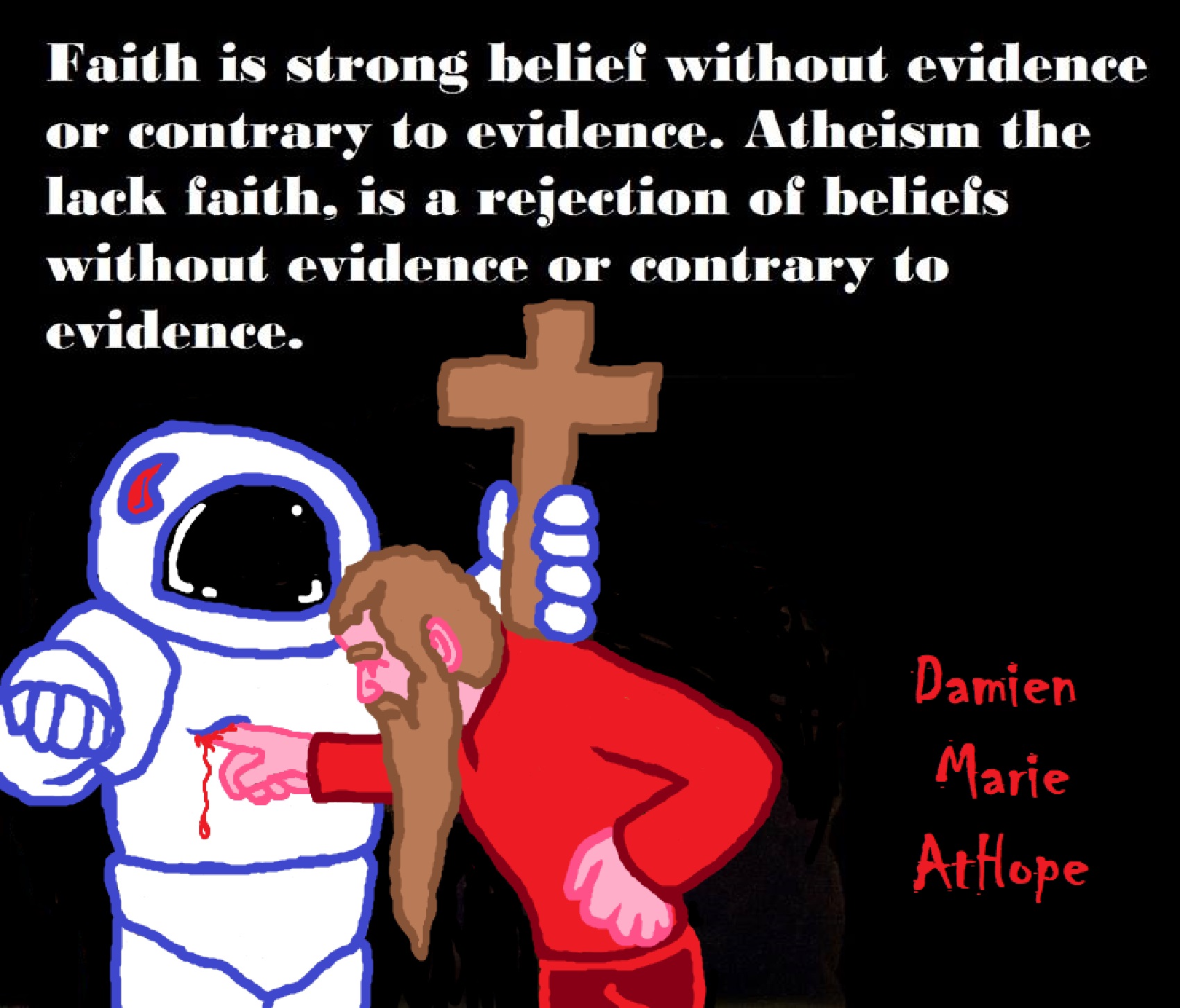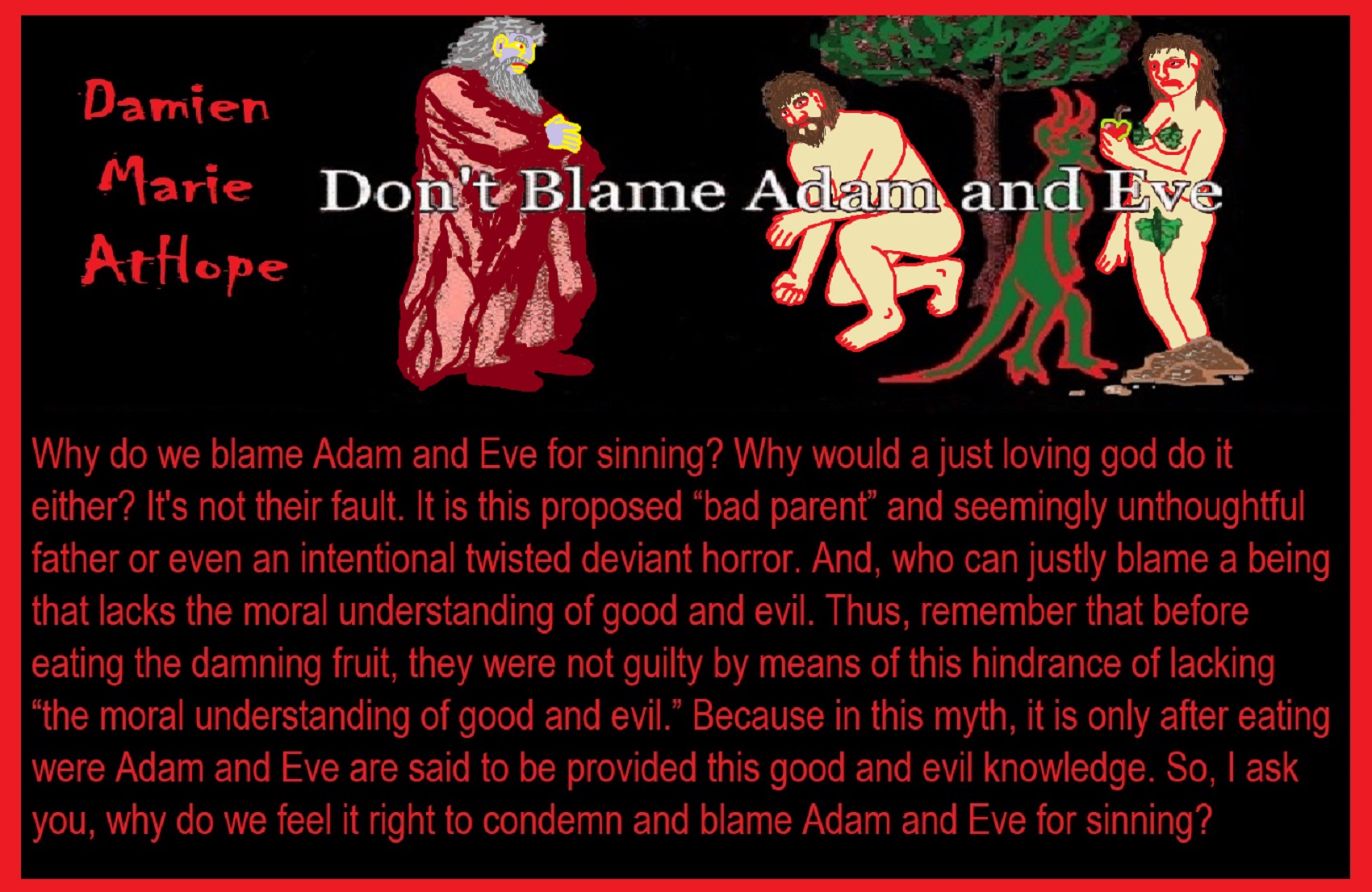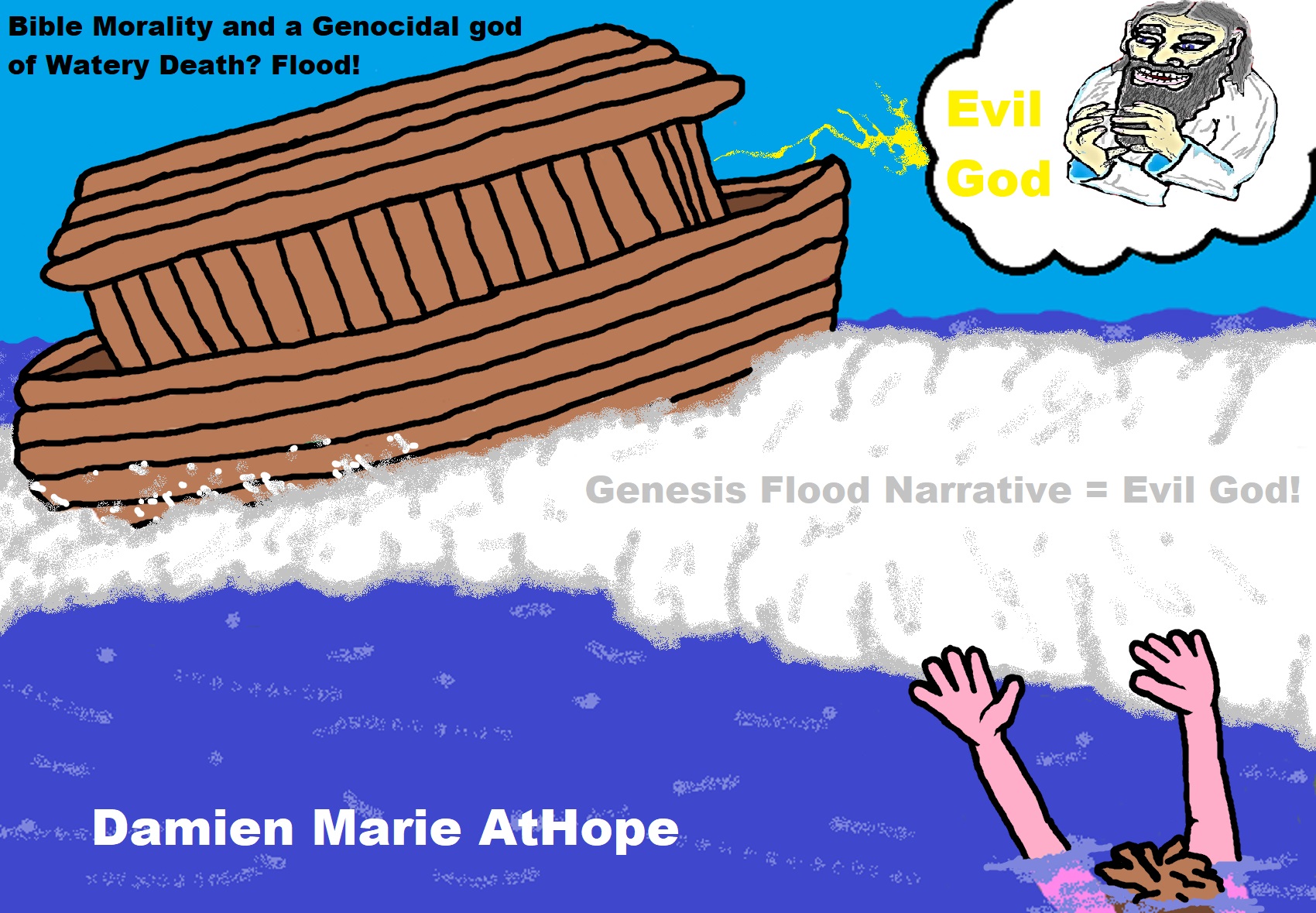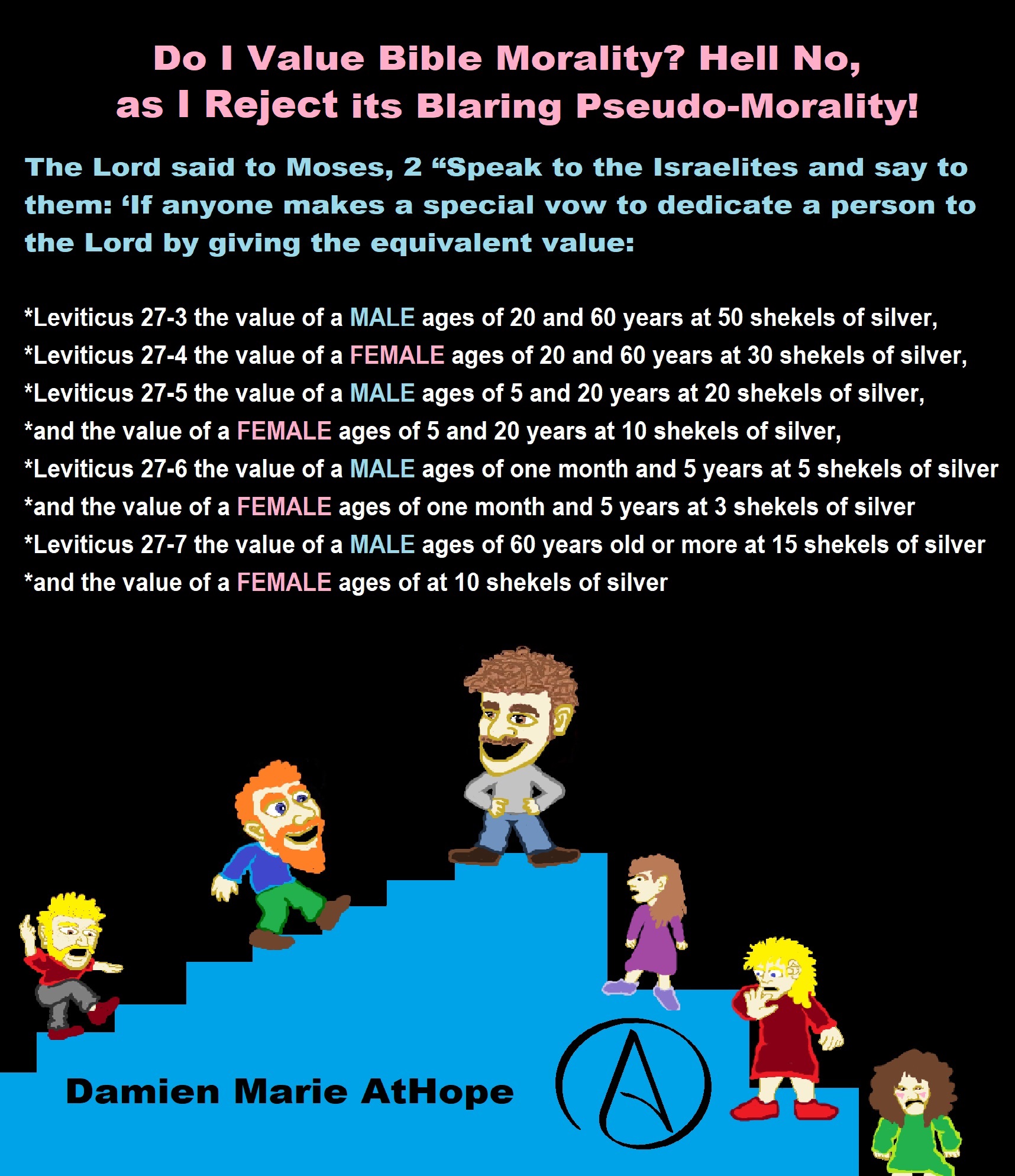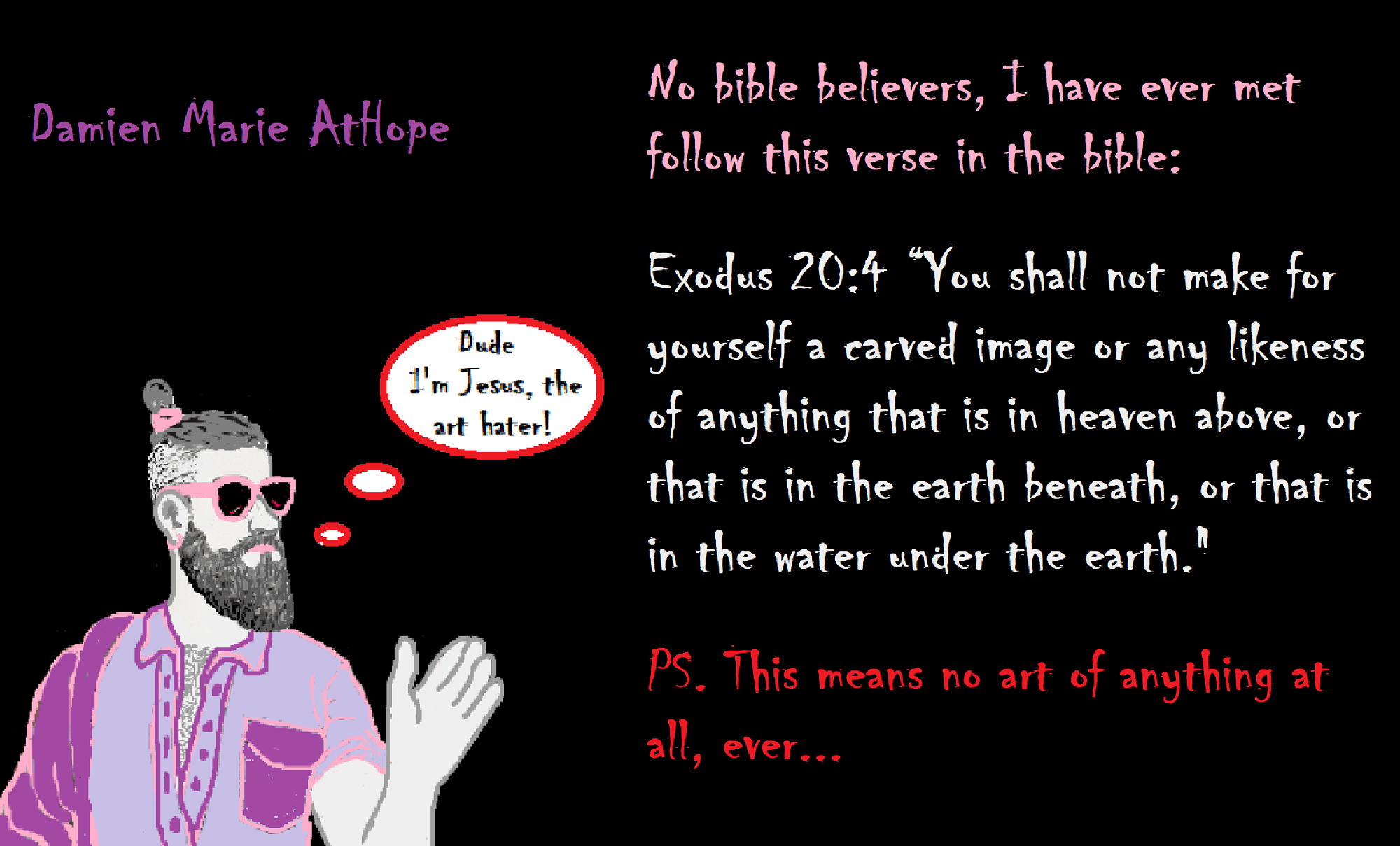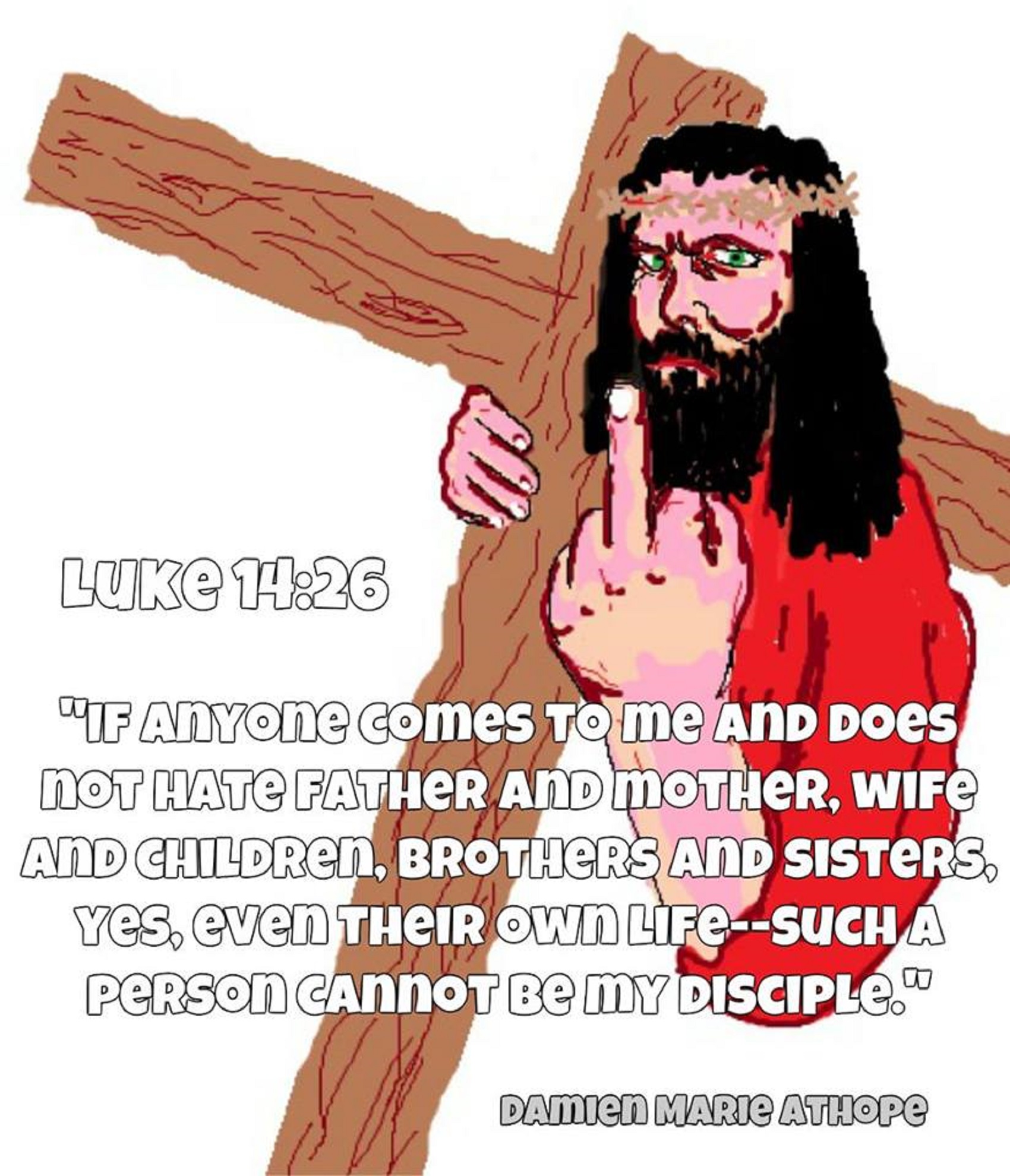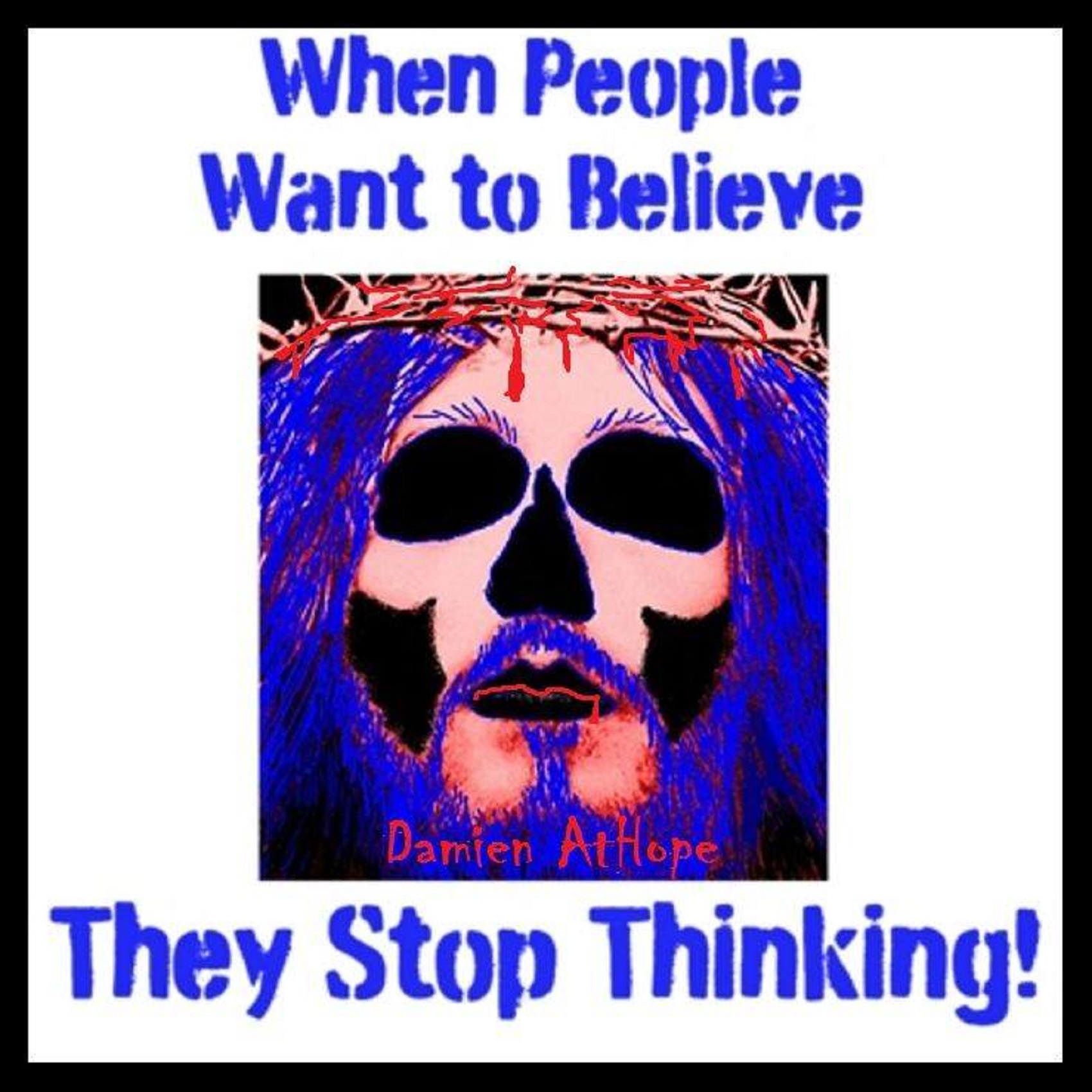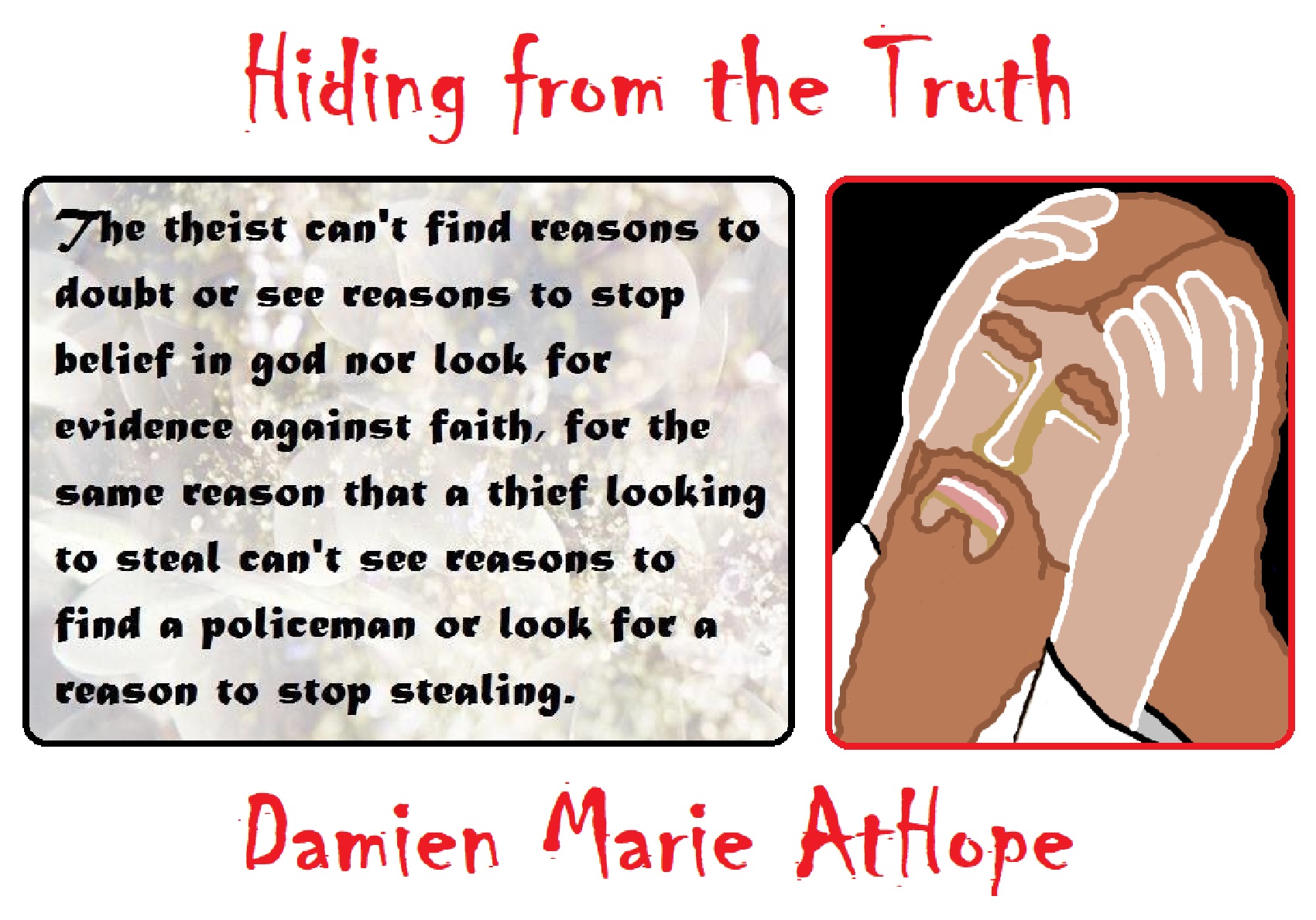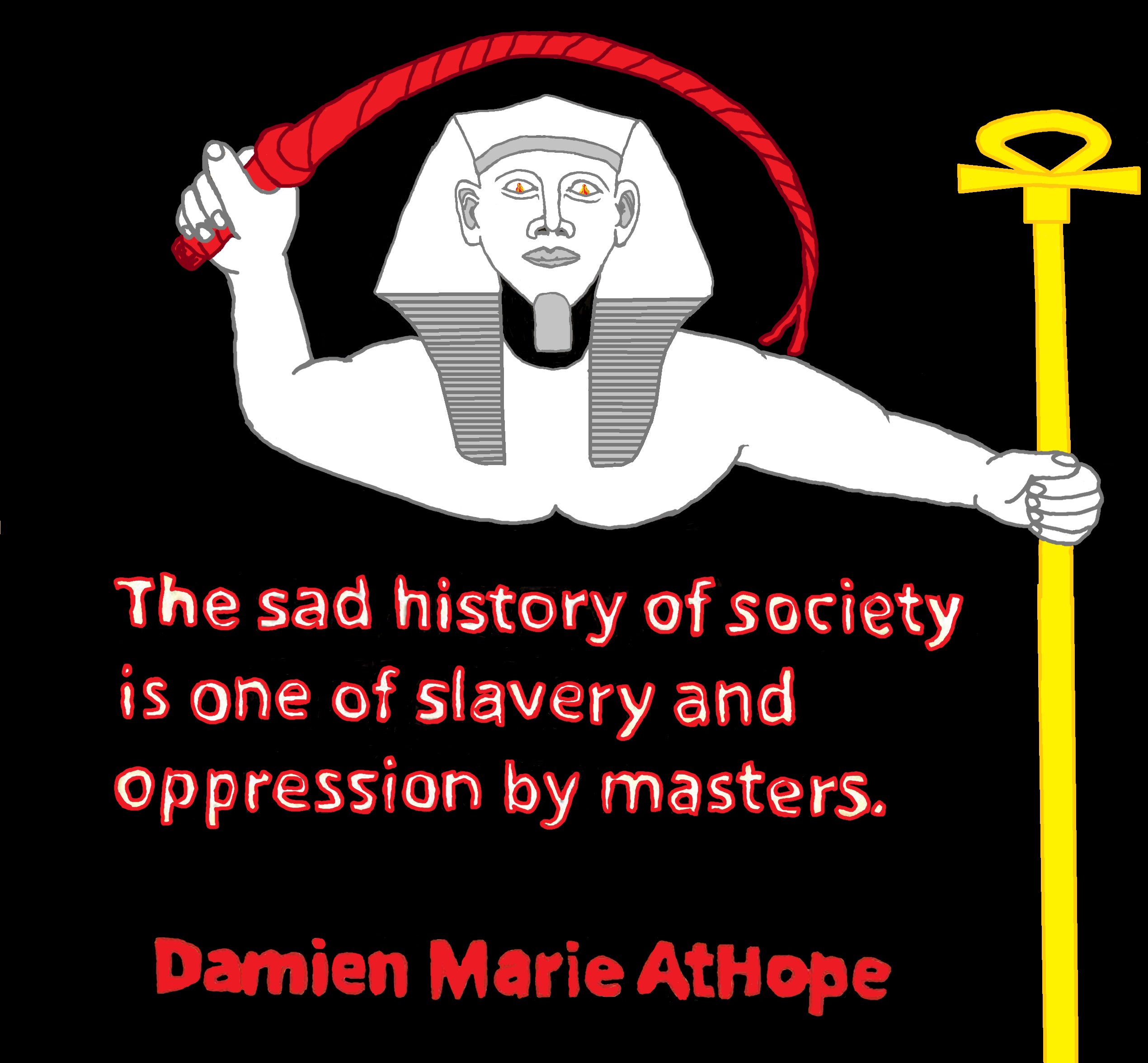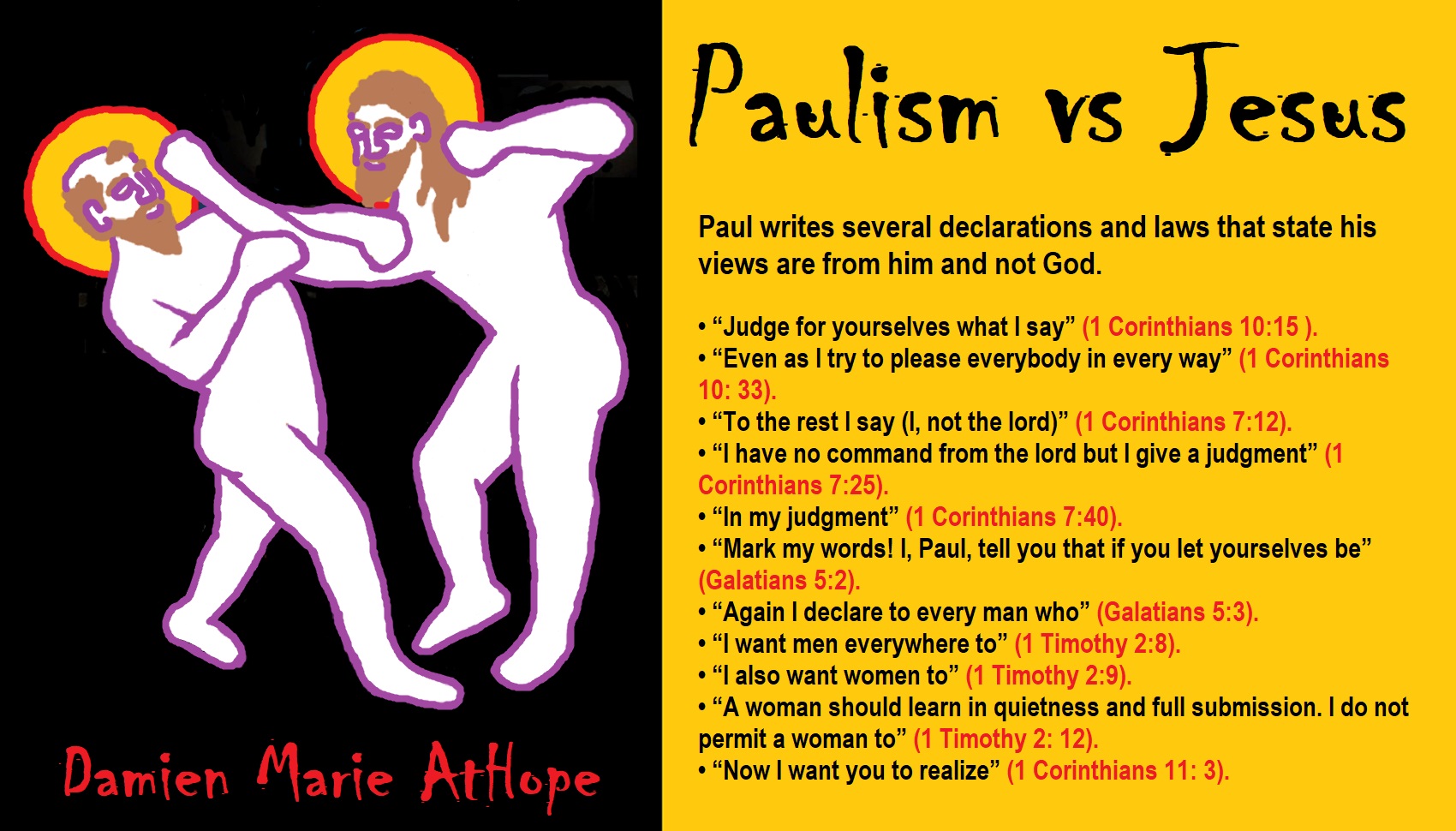
Did Paul alway claim to speak for god or also speak from himself or Jesus?
Paul writes several declarations and laws that state his views are from him and not God.
• “Judge for yourselves what I say” (1 Corinthians 10:15 New International Version).
• “Even as I try to please everybody in every way” (1 Corinthians 10: 33 New International Version).
• “To the rest I say (I, not the lord)” (1 Corinthians 7:12 New International Version).
• “I have no command from the lord but I give a judgment” (1 Corinthians 7:25 New International Version).
• “In my judgment” (1 Corinthians 7:40 New International Version).
• “Mark my words! I, Paul, tell you that if you let yourselves be” (Galatians 5:2 New International Version).
• “Again I declare to every man who” (Galatians 5:3 New International Version).
• “I want men everywhere to” (1 Timothy 2:8 New International Version).
• “I also want women to” (1 Timothy 2:9 New International Version).
• “A woman should learn in quietness and full submission. I do not permit a woman to” (1 Timothy 2: 12 New International Version).
• “Now I want you to realize” (1 Corinthians 11: 3 New International Version).
“Modern conservative “Christians” (who follow the conservative Paul) are so un-Christ-like and so unlike the Jesus (a liberal) they claim to worship.” – Davis D. Danizier
Paul (originally as Saul of Tarsus) was an admitted persecutor of Christians who might have found a more effective way to undermine the followers of Jesus. Perhaps he infiltrated their ranks and taught a doctrine that opposed teachings attributed to Jesus on several fronts, replacing Jesus’ alleged teaching of universal, compassionate, selfless action with a selfish teaching of desire to gain a “free gift” of salvation based only on faith and completely devoid of any behavioral requirement or obedience to law, and distracting us from the selfless teachings attributed to Jesus. (It must be noted that Jesus never wrote anything, and his reported teachings are based on accounts whose authorship cannot be verified with certainty, but we can still cite the body of teachings attributed to Jesus as the Jesus doctrine since that is what has been handed down to us as being his teachings.)
Despite the widespread, uncritical adulation of Paul by those who listen to others instead of thinking for themselves, independent-minded analysts of Jesus’ teachings have often found great cause to find fault with Paul. One of the most famous critcisms comes from Thomas Jefferson, who wrote in a letter to James Smith, that “Paul was … the first corrupter of the doctrines of Jesus.” (Works, 1829 edition, vol. 4, p. 327.) George Bernard Shaw, the English playwright, is widely quoted as having said that: “…it would have been a better world if Paul had never been born.”
Jesus reportedly teaches that BEHAVIORAL requirements (works/deeds), rooted in an internal change of spiritual growth within the person (not external or apart from the person, though the gift of teaching and techniques to achieve this personal change are a gift of grace not earned or deserved by us, but requiring ACTIONS [deeds] to implement), are integral to salvation. While perhaps it is not possible for us to “earn” the “free gift” that Jesus reportedly provides — a teaching of the universal compassionate love by which the evil within us CAN be transformed into a more holy kindness of love — the Jesus account clearly includes a behavioral component to his requirements for “salvation.” While he does not say that this satisfies any “debt,” he still requires it; perhaps he is demanding merely a small partial “payment” as a gesture of “good faith.” (In fact, James suggests this by his comments in James 2:26, that we demonstrate our faith — if it is genuine — BY our works or deeds.)
Some will say that puny mortals can never perform enough good behavior to “earn” or “merit” salvation based on the value of their deeds — that the attempts at human righteousness is as “filthy rags.”
Aside from the fact that this simply contradicts Jesus, the point is not whether or not our puny mortal attempts at righteousness have sufficient intrinsic value. Jesus never says that compassionate deeds “earn” salvation, or that any of us could ever “merit” the very gift of our existence. He merely sets that as the standard for compliance. Just as a child may offer its parents or grandparents an awkwardly-drawn piece of art, which likely holds little real artistic merit (perhaps in terms of art critics it might be as “filthy rags”), still the parents sincerely and genuinely cherish such efforts. It may not “merit” winning an art contest and may be able to “earn” very little, but loving parents find it good enough to represent the qualities THEY deem of real and lasting value. The point is that Paul sets the standard for salvation as faith or belief in accepting Jesus (see below) while Jesus explicitly rejects this standard (see Matt 7:21-27) and sets the standard at universal compassionate love expressed in actions, as noted in greater detail in the next few paragraphs.
Why would a loving god, as spiritual father on a more perfect scale, for those who believe him to be that, not be able to give even greater acceptance, even of “filthy rags,” if sincerely offered as the best effort … ESPECIALLY if he has said that he would do so?
To argue against that is to join Paul in contradicting the teachings of Jesus.
In the Sermon on the Mount, near the beginning of his ministry, Jesus is shown as introducing a bold new concept, not only that we should love friends and neighbors, but our enemies as well.
When asked by a lawyer what the most important commandment in the LAW was, Jesus reportedly answered (as reported in Matt 22:36-40 and Luke 10:25-37) with references from the Old Testament, that the GREATEST law was to love god (see Deut 6:5) and the second was to love your neighbor as yourself (see Lev 19:18). In the Luke text, the lawyer specifically asks what is necessary for eternal life (verse 25) and after Jesus references the two GREAT commandments, he says “This DO and you will live” (verse 28) — showing clearly that salvation is related to works/deeds/actions, however important faith might be to motivating such behavior. Note further, that in the Luke version, this was illustrated by an example, the parable of the Good Samaritan, which was used to define “neighbor” very broadly, to include enemies. The Samaritan (the lowest of the outcasts) is the one who exemplifies this broad definition, and who provides the example of one who is saved by their compassionate actions toward their enemy. Yet the Samaritan is not even a believer, not one having “faith” and not one who has accepted Jesus as savior, yet this is who Jesus chooses as the example of one who gains eternal life, which is what the lawyer specifically asked.
Another time during his ministry, Jesus taught that the people who would go to heaven (be saved) must be as little children (Matt. 18:4-5; 19:14; Mark 9:36-37; 10:14-15; Luke 18:15-17), while Paul wrote that maturity demands us to forsake the things of childhood (I Cor 13:11).
Thus, Jesus teaches us that the kingdom of heaven will be filled with those who lived their lives in active compassion and childlike innocence, while Paul envisions a heaven of crusty, serious “mature” grouches who merely have to profess “acceptance of” or “belief in” Jesus without ever actually performing a single kind, compassionate, cheerful or childishly playful deed.
In his last teaching before going to the upper room for the Last Supper and the “beginning of the end,” Jesus described in Matt. 25:31-45 the final judgment as being based solely and entirely on behavioral responses to internalized compassion. And Jesus makes it very clear that those who DO express universal compassion in behavioral action WILL BE SAVED, and those who do not will NOT be saved. Period. There is no other qualification.
Mother Teresa juxtaposed these two messages (the “great commandments” and that what we DO to “the least of these” is done to God) to postulate that our actions toward “the least of these” are actually done unto god, which she took very literally, and asserted that we fulfill the first commandment by obedience to the second — which motivated her to give up a well-to-do life in Albania, and search to find whoever was the ultimate “least of these” in the world, which she found first on the streets of Calcutta, India, and later in missions throughout the world.
Dr. Viktor Frankl, a German Jew who survived the Nazi concentration camps during the Holocaust, wrote in his book Man’s Search for Meaning of rare but remarkable examples of men who dying of hunger, yet still gave comfort, along with their last crusts of bread, to their fellow sufferers to alleviate their suffering. Even torture and extreme deprivation could not cause them to abandon their deeply-felt compassion.
[Note: For those seeking to emulate this kind of high-level compassion in their own lives, the best non-theocentric (which can therefore be appreciated both believers and non-believers alike) I have found for teaching HOW TO cultivate this degree of compassion — to love enemies, turn the other cheek and incorporate a cheerful kind of compassion even under conditions of extreme adversity — and incorporate it even with difficult people (without getting taken advantage of), and integrate these cherished values with our personal goals and desires and the practical, everyday needs of our daily lives, is the book Extro-Dynamics, by Douglas Dunn. See the website at: http://www.wordwiz72.com/exdyn.html.]
But those prisoners described by Frankl were Jewish. They haven’t confessed Jesus as their savior. I’m sure Paul would consign them to hell, while Jesus would embrace them and count them among His sheep.
Another issue must be considered when contemplating a theology of salvation based solely on belief and nothing else. Belief requires exposure. One cannot have belief in something that one has never been exposed to. So what about those who were supposedly created by a God who is both just and merciful, but lived in a time or place when there would be absolutely no possible chance of ever being exposed to Jesus? Imagine an innocent child born in India, China or Africa 800 years before Jesus was born (or even 800 years afterward, for that matter). There would be absolutely no chance this child could ever be exposed to the opportunity of believing in Jesus or accepting him as personal savior. Again, Paul’s theology consigns such innocent children to hell, while (as noted previously) Jesus taught that of such is the kingdom of heaven (Matt 18:4-5; 19:14; Mark 9:36-37; 10:14-15; Luke 18:15-17). Is Paul’s doctrine of salvation only by faith, and consigning all others to eternal damnation, from the God of justice or mercy?
Even in John 3, the discourse to Nicodemus on salvation as a gift of grace, Jesus includes specific behavioral requirements (John 3:19-21). In any case, while some writings (other than Paul) may occasionally discuss faith as a separate topic (as with honesty, courage, etc.), no one (except Paul) EVER states that salvation can occur with any of these virtues APART FROM works/deeds actions. This does not mean that, in TEACHING us the BEHAVIOR of salvation that Jesus did not thus give us a free gift far beyond what we could ever earn, a gift of grace, but it does not mean that it was given entirely apart from specified behavioral conditions, as Paul says.
All of the gospels are replete with statements of behavioral obligation, and NEVER once make any statement remotely similar to Paul that the faith and grace that engender salvation occur “apart from” obedience, works or deeds. There are certainly passages that cite the importance, even the need, for faith or belief, and in some of these the idea of actions or “works” might go unmentioned. It is common for a passage to deal with a single subject only. But even in such passages, no one other than Paul ever comes out and specifically states that works or good behavior are NOT essential to salvation or justification. Paul is the only one to do this.
Other Problems with Paul?
Manner of Worship: Jesus and Paul left contradictory legacies as to the manner in which worship should be conducted. Jesus preached as an itinerant wanderer, informally to locals he encountered in his travels. Usually these were small groups, though he did encounter the occasional large crowd. Jesus always prayed privately, and taught his followers to do the same. In fact, he specifically prohibited public prayer and public displays of worship (Matt. 6:1-18). The fact that he belabored this point so thoroughly in his Sermon on the Mount, his first and greatest public teaching, almost suggest a premonition that others would follow to undermine and contradict him. Jesus did not organize any great church. He led a small, itinerant band of traveling wanderers from town to town. The closest he came to establishing any kind of authority was in Matt. 16:18, when he designated an itinerant fisherman named Simon to become “Peter” the “rock” upon which his church would be founded. Paul, in contrast, organized a great system of churches. The story of Acts is the story of Paul traveling throughout the known world, establishing great churches. His epistles, which comprise the greatest single portion of the New Testament, about a third of it, were written to maintain administrative control of this great ecclesiastical network and to standardize its doctrines, not based on the teachings of Jesus, but on his own contradictory theology.
As with so many other issues, today’s modern evangelical Christians fight for their right to expropriate public facilities for their worship and offer great churches with elaborate public worship rituals, once again coming down on the side of Paul and repudiating the simple teachings of the founder they accept, once again, in name only.
Dealing with sinners: Jesus ministered to the sinners, with no reluctance to engage adulterers, whores, publicans, tax collectors, lepers, or any other “unclean” person (the whole need not a physician; a church is a hospital for sinners rather than a showcase for saints). (This, of course, completely devastates the argument that god cannot be in the presence of sin, unless you do not believe in the notion of Jesus being god.) Paul, contradicts Jesus: 1Cor 5:11 “But now I have written unto you not to keep company, if any man that is called a brother be a fornicator, or covetous, or an idolater, or a railer, or a drunkard, or an extortioner; with such an one no not to eat.”
Feeding the poor: Jesus taught in Matt 25:31-46 that our final salvation and judgment would be based in large part on our willingness to feed the poor. Paul contradicts this: 2Thess 3:10 “For even when we were with you, this we commanded you, that if any would not work, neither should he eat.” Does this mean that if poor people are unemployed, we should turn them away from any charity?
Slavery: When the Southerners in our country sought to defend slavery, they called upon Paul to back them up, citing Ephesians 6:5 and Titus 2:9-10, where he exhorts slaves to obey their masters, and the fact that slavery was widely practiced, but Paul never condemned it once.
Equality for Women: Paul was very anti-woman. He ordered that they not be allowed to speak in the churches (I Cor 14:34-45) and that they stay home and take care of the kids (1Timothy 5:14), and that wives should be submissive to the mastery of their husbands (Ephesians 5:22-24 and Colossians 3:18-19).
Homosexuals: The ONLY passages in the New Testament that are offered as evidence against equal rights for homosexuals are those taught by Paul (various passages have been construed to oppose homosexuality, but the most direct reference is in Romans 1:26-27). Jesus himself never uttered a single word against homosexuals and, given his affinity for sinners, lepers, tax collectors, and other outcasts, it is likely that in our modern times it would be Jesus who would be embracing the homosexuals rejected by those who claim to be his followers. Just as it was Paul’s words that were held up in the mid-1800’s to justify slavery, so Paul’s words today are still used to persecute others.
Ironically, Paul is the one who asserts that the Law of Moses is no longer operational, yet he echoes the Law on homosexuality (see Leviticus 18:22). Ironically, many of the same Christians who eat pork, shrimp or rabbit (forbidden in Leviticus 11) because the Law no longer applies, still also cite Leviticus 18 when they want to oppose homosexuality — trying to have it both ways.
There has been a popular piece that has been circulated among many Christian churches and publications, giving a description of Paul and his background, and then showing him applying for a position as a pastor. The punch line is that, just knowing Paul’s “resume,” would YOU hire him as a preacher? The message is supposed to be about judging others but, there is also another message: knowing what we DO know about Paul, MANY Christians are inclined to find him rather unsavory. Those who claim to take upon them the name of JESUS should carefully examine Paul’s undermining of Jesus’ message and his many contradictions of Jesus and the other apostles, as well as the plain nonsense of his bloody atonement theory of human sacrifice, and then decide if they want to be Christians or Paulians.
Punishment for Adam’s sin?
Paul is the one who introduces the concept of original sin and the “inheritance” of sin, in Romans 5:12, “Wherefore, as by one man sin entered into the world, and death by sin, and so death passed upon all men, for that all have sinned.”
Why are we, in any way whatsoever, held “responsible” for the sins of Adam and Eve? How can a person be “guilty” of something they didn’t do, which in fact was done thousands of years before they were even conceived? How can there be an “inherited” moral flaw. Morality is “right and wrong,” not a physical, tangible object. In any case, how can you be responsible for something you had nothing to do with?
I cannot imagine that a god could be called “just” who allows people to be punished for something they have no control over; for the way they were born; i.e., the way god created them.
If my father and mother do something wrong, why do I get punished for that? What do THEIR wrongs have to do with MY sins. Talk about unfair! The scenario was ridiculous enough when the atonement supposedly paid a physical price (transferable, with no explanation of how) for my OWN sins. Anyone who suggests that the atonement isn’t even just for MY sins alone, but also for someone else’s, is sliding downhill very fast.
Is sin a moral issue or a birth defect? Should babies born with birth defects be punished? Should we require abortions if the fetus is deformed?
It is interesting to note that while Paul invents a theology of atonement based on the offering of Jesus as a human sacrifice for sin, Jesus explicitly rejects this doctrine. The gospel according to Matthew TWICE, in Matt 9:13 and Matt 12:7, states that Jesus said: “I will have mercy, and not sacrifice” (KJV). More modern translations, such as the RSV and NIV, update the archaic meaning of the word “will” and translate Jesus’ statements in both verses as: “I desire mercy and not sacrifice.” This could not be a more explicit rejection of Paul’s later teaching. 1
Paul the Apostle
“Paul (previously called Saul of Tarsus; c. 5 – c. 64/65 CE), commonly known as Paul the Apostle and Saint Paul, was a Christian apostle who spread the teachings of Jesus in the first-century world. Generally regarded as one of the most important figures of the Apostolic Age, he founded several Christian communities in Asia Minor and Europe from the mid-40s to the mid-50s CE. Paul’s influence on Christian thinking arguably has been more significant than any other New Testament author. Paul declared that “Christ is the end of the law“, exalted the Christian church as the body of Christ, and depicted the world outside the Church as under judgment. Paul’s writings include the earliest reference to the “Lord’s Supper”, a rite traditionally identified as the Christian communion or Eucharist. In the East, church fathers attributed the element of election in Romans 9 to divine foreknowledge. The themes of predestination found in Western Christianity do not appear in Eastern theology. The critics of Paul the Apostle include US president Thomas Jefferson, a Deist, who wrote that Paul was the “first corrupter of the doctrines of Jesus.” Christian anarchists Leo Tolstoy and Ammon Hennacy took a similar view.” ref
“According to the New Testament book Acts of the Apostles, Paul was a Pharisee. He participated in the persecution of early disciples of Jesus, possibly Hellenised diaspora Jews converted to Christianity, in the area of Jerusalem, prior to his conversion. Some time after having approved of the execution of Stephen, Paul was traveling on the road to Damascus so that he might find any Christians there and bring them “bound to Jerusalem” (ESV). At midday, a light brighter than the sun shone around both him and those with him, causing all to fall to the ground, with the risen Christ verbally addressing Paul regarding his persecution. Having been made blind, along with being commanded to enter the city, his sight was restored three days later by Ananias of Damascus. After these events, Paul was baptized, beginning immediately to proclaim that Jesus of Nazareth was the Jewish messiah and the Son of God. Approximately half of the content in the book of Acts details the life and works of Paul.” ref
“Fourteen of the 27 books in the New Testament have traditionally been attributed to Paul. Seven of the Pauline epistles are undisputed by scholars as being authentic, with varying degrees of argument about the remainder. Pauline authorship of the Epistle to the Hebrews is not asserted in the Epistle itself and was already doubted in the 2nd and 3rd centuries. It was almost unquestioningly accepted from the 5th to the 16th centuries that Paul was the author of Hebrews, but that view is now almost universally rejected by scholars. The other six are believed by some scholars to have come from followers writing in his name, using material from Paul’s surviving letters and letters written by him that no longer survive. Other scholars argue that the idea of a pseudonymous author for the disputed epistles raises many problems. Today, Paul’s epistles continue to be vital roots of the theology, worship, and pastoral life in the Latin and Protestant traditions of the West, as well as the Eastern Catholic and Orthodox traditions of the East. Paul’s influence on Christian thought and practice has been characterized as being as “profound as it is pervasive”, among that of many other apostles and missionaries involved in the spread of the Christian faith.” ref
“In the last century, scholars have come to appreciate Paul as the actual founder of the religious movement that would become Christianity. Paul was a Diaspora Jew, a member of the party of the Pharisees, who experienced a revelation of the resurrected Jesus. After this experience, he traveled widely throughout the eastern Roman Empire, spreading the “good news” that Jesus would soon return from heaven and usher in the reign of God (“the kingdom”). Paul was not establishing a new religion; he believed that his generation was the last before the end time when this age would be transformed. However, as time passed and Jesus did not return, the second century Church Fathers turned to Paul’s writings to validate what would ultimately be the creation of Christian dogma. Thus, Paul could be viewed as the founder of Christianity as a separate religion apart from Judaism.” ref
“In Christian tradition, he is known as Paul of Tarsus, as this is where Luke says he was born (Acts 9:11). At the time, Tarsus was located in the province of Cilicia, now modern Turkey. However, Paul himself indicates that he was from the area of Damascus which was in Syria (see the letter to the Galatians). Luke has provided many of the standard elements in Paul’s life, but most of these items stand in stark opposition to what Paul himself reveals in his letters. For instance, Luke claims that Paul grew up in Jerusalem, studying at the feet of many who would be considered the first rabbis of normative Judaism, and eventually becoming a member of the council, or the Sanhedrin. Paul himself says that he only visited Jerusalem twice, and even then his stay was a few days. What do we do about such contradictions?” ref
“Paul as ‘convert’ is not the most accurate term to be applied to him. Conversion assumes changing from one kind of belief to another. There are two problems with this concept as applied to Paul:
- at the time, there was essentially no Christian religion for him to convert to
- Paul himself is ambiguous when it comes to understanding what he would have considered himself.
When he says “When among the gentiles, I acted as a gentile, and when among the Jews, I acted as Jew; I was all things to all men,” it does not help us resolve the question.” ref
“Paul probably meted out what he himself received – the 39 lashes, a form of synagogue discipline. But this raises more questions. Synagogue councils had authority only upon the agreement of those in the community. In other words, Paul could have walked away from this, but he did not – again, does this indicate that he still saw himself as a Jew? And again, what did he receive the lashes for? What were Christians saying/doing that would lead to disciplinary action? PAUL CLAIMED THAT GENTILES ARE SAVED BY FAITH ALONE, & NOT BY WORKS OF THE LAW. Paul has a problem. He was a Pharisee. The Law held great meaning for him. How could God have created the Law, but then not apply it universally? This is where it gets a little sticky – he can never say that the Law is not good, and so he defends it, but at the same time, it does not apply to gentiles. And in doing so, he sometimes paints himself into a corner and provides centuries of scholarly books and commentaries on this very subject.” ref
Paul’s Self-view
“In the opening verses of Romans 1, Paul provides a litany of his own apostolic appointment to preach among the Gentiles and his post-conversion convictions about the risen Christ. Paul described himself as set apart for the gospel of God and called to be an apostle and a servant of Jesus Christ. Jesus had revealed himself to Paul, just as he had appeared to Peter, to James, and to the twelve disciples after his resurrection. Paul experienced this as an unforeseen, sudden, startling change, due to all-powerful grace, not as the fruit of his reasoning or thoughts. Paul also describes himself as afflicted with “a thorn in the flesh”; the nature of this “thorn” is unknown.” ref
There are debates as to whether Paul understood himself as commissioned to take the gospel to the gentiles at the moment of his conversion. Before his conversion, he believed his persecution of the church to be an indication of his zeal for his religion; after his conversion he believed Jewish hostility toward the church was sinful opposition, that would incur God’s wrath. Paul believed he was halted by Christ, when his fury was at its height. It was “through zeal” that he persecuted the Church, and he obtained mercy because he had “acted ignorantly in unbelief”.” ref
Paul’s Understanding of Jesus Christ
“Paul’s writings emphasized the crucifixion, Christ’s resurrection, and the Parousia or second coming of Christ. Paul saw Jesus as Lord (kyrios), the true messiah and the Son of God, who was promised by God beforehand, through his prophets in the Holy Scriptures. While being a biological descendant from David (“according to the flesh”), he was declared to be the Son of God by his resurrection from the dead.” ref
“According to E. P. Sanders, Paul “preached the death, resurrection, and lordship of Jesus Christ, and he proclaimed that faith in Jesus guarantees a share in his life.” In Paul’s view, “Jesus’ death was not a defeat but was for the believers’ benefit,” a sacrifice which substitutes for the lives of others, and frees them from the bondage of sin. Believers participate in Christ’s death and resurrection by their baptism. The resurrection of Jesus was of primary importance to Paul, bringing the promise of salvation to believers. Paul taught that, when Christ returned, those who had died believing in Christ as the savior of mankind would be brought back to life, while those still alive would be “caught up in the clouds together with them to meet the Lord in the air”.” ref
“Sanders concludes that Paul’s writings reveal what he calls the essence of the Christian message: “(1) God sent his Son; (2) the Son was crucified and resurrected for the benefit of humanity; (3) the Son would soon return; and (4) those who belonged to the Son would live with him forever. Paul’s gospel, like those of others, also included (5) the admonition to live by the highest moral standard: “May your spirit and soul and body be kept sound and blameless at the coming of our Lord Jesus Christ”.” ref
“In Paul’s writings, the public, corporate devotional patterns towards Jesus in the early Christian community are reflective of Paul’s perspective on the divine status of Jesus in what scholars have termed a “binitarian” pattern of devotion. For Paul, Jesus receives prayer, the presence of Jesus is confessionally invoked by believers, people are baptized in Jesus’ name, Jesus is the reference in Christian fellowship for a religious ritual meal (the Lord’s Supper; in pagan cults, the reference for ritual meals is always to a deity), and Jesus is the source of continuing prophetic oracles to believers.” ref
Pauline Christianity
“Paul had a strong influence on early Christianity. Hurtado notes that Paul regarded his own Christological views and those of his predecessors and that of the Jerusalem Church as essentially similar. According to Hurtado, this “work[s] against the claims by some scholars that Pauline Christianity represents a sharp departure from the religiousness of Judean ‘Jesus movements’.” ref
“Pauline Christianity or Pauline theology (also Paulism or Paulanity), otherwise referred to as Gentile Christianity, is the theology and form of Christianity which developed from the beliefs and doctrines espoused by the Hellenistic-Jewish Apostle Paul through his writings and those New Testament writings traditionally attributed to him. Paul’s beliefs were rooted in the earliest Jewish Christianity, but deviated from this Jewish Christianity in their emphasis on inclusion of the Gentiles into God’s New Covenant, and his rejection of circumcision as an unnecessary token of upholding the Mosaic Law.” ref
“Proto-orthodox Christianity, which is rooted in the first centuries of the history of Christianity, relies heavily on Pauline theology and beliefs, and considers them to be amplifications and explanations of the teachings of Jesus. Since the 18th century, a number of scholars have proposed that Paul’s writings contain teachings that are different from the original teachings of Jesus and those of the earliest Jewish Christians, as documented in the canonical gospels, early Acts, and the rest of the New Testament, such as the Epistle of James.” ref
“There are considerable differences of scholarly opinion concerning how far Paul did in fact influence Christian doctrine. According to the 19th-century German theologian Ferdinand Christian Baur, founder of the Tübingen school whose view was widely influential, Paul was utterly opposed to the disciples, based upon his view that Acts was late and unreliable and who contended that Catholic Christianity was a synthesis of the views of Paul and the Judaizing church in Jerusalem. Since Adolf von Harnack, the Tübingen position has been generally abandoned.” ref
“Ultradispensationalists such as E. W. Bullinger viewed the distinction abhorred by the Ebionites as positive and essential doctrine. Pauline Christianity was essentially based on Rome and made use of the administrative skills which Rome had honed. Its system of organization with a single bishop for each town was, in Bart Ehrman‘s view, the means by which it obtained its hegemony. Michael Goulder wrote widely on a theory of Christian origins that sees a fundamental opposition between Paul the Apostle on one side and the Jerusalem Christians Peter and James, Jesus’ brother, on the other. This has been seen as reviving a hypothesis proposed by 19th century Hegelian philosopher and theologian Ferdinand Christian Baur of the Tübingen school.” ref
“Some literary critics of Christianity argue that Paul distorted the original and true faith, or claim that Christianity is largely his invention. The former include such secular commentators as the philosophers Friedrich Nietzsche and Bertrand Russell. Nietzsche’s criticisms are based upon his moral objections to Paul’s thought. Other writers, such as Slavoj Žižek and Alain Badiou, also agree with this interpretation, but hold much more positive opinions about Paul’s theological influence. Christian anarchists, such as Leo Tolstoy and Ammon Hennacy, believe Paul distorted Jesus’ teachings. Tolstoy claims Paul was instrumental in the church’s “deviation” from Jesus’ teaching and practices, while Hennacy believed “Paul spoiled the message of Christ.” ref
Criticism of the “Pauline Christianity”-thesis
“Christians themselves disagree as to how far there was tension between Paul and the Jerusalem Church. Roman Catholics, Eastern and Oriental Orthodox, Assyrian Church of the East, and conservative Protestants, contend that Paul’s writings were a legitimate interpretation of the Gospel. The idea that Paul invented Christianity is disputed by numerous Christian writers. According to Christopher Rowland, Pauline Christianity is the development of thinking about Jesus in a gentile missionary context. Rowland contends that “the extent of his influence on Christian thought has been overestimated”, concluding that Paul did not materially alter Jesus’ teachings. Hurtado notes that Paul regarded his Christological views and the Jerusalem Church’s as essentially similar. According to Hurtado, this “work[s] against the claims by some scholars that Pauline Christianity represents a sharp departure from the religiousness of Judean ‘Jesus movements’.” ref
“The pejorative use of the expressions “Pauline Christianity”, “Paulism,” or “Paulanity,” refers to the idea that Paul’s supporters, as a distinct group, had an undue influence on the formation of the canon of scripture. It is also sometimes used to refer to the notion that certain bishops, especially the Bishop of Rome, influenced the debates which determined the dogma of early Christianity, thus elevating a Pauline interpretation of the Gospel, to the detriment of other interpretations (including those held by the Gnostics and Marcionites).” ref
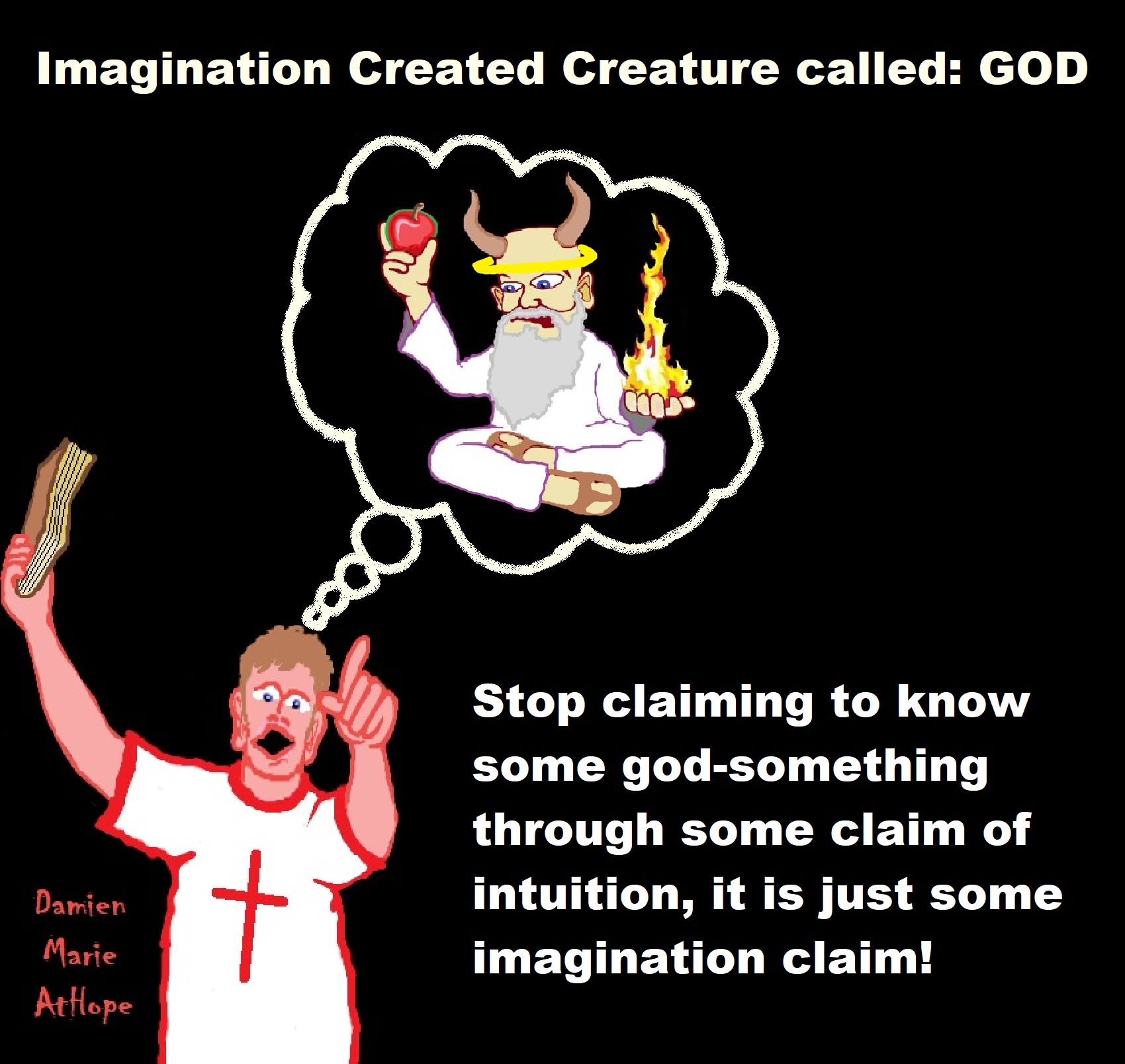


Animism: Respecting the Living World by Graham Harvey
“How have human cultures engaged with and thought about animals, plants, rocks, clouds, and other elements in their natural surroundings? Do animals and other natural objects have a spirit or soul? What is their relationship to humans? In this new study, Graham Harvey explores current and past animistic beliefs and practices of Native Americans, Maori, Aboriginal Australians, and eco-pagans. He considers the varieties of animism found in these cultures as well as their shared desire to live respectfully within larger natural communities. Drawing on his extensive casework, Harvey also considers the linguistic, performative, ecological, and activist implications of these different animisms.” ref


My thoughts on Religion Evolution with external links for more info:
- (Pre-Animism Africa mainly, but also Europe, and Asia at least 300,000 years ago), (Pre-Animism – Oxford Dictionaries)
- (Animism Africa around 100,000 years ago), (Animism – Britannica.com)
- (Totemism Europe around 50,000 years ago), (Totemism – Anthropology)
- (Shamanism Siberia around 30,000 years ago), (Shamanism – Britannica.com)
- (Paganism Turkey around 12,000 years ago), (Paganism – BBC Religion)
- (Progressed Organized Religion “Institutional Religion” Egypt around 5,000 years ago), (Ancient Egyptian Religion – Britannica.com)
- (CURRENT “World” RELIGIONS after 4,000 years ago) (Origin of Major Religions – Sacred Texts)
- (Early Atheistic Doubting at least by 2,600 years ago) (History of Atheism – Wikipedia)
“Religion is an Evolved Product” and Yes, Religion is Like Fear Given Wings…
Atheists talk about gods and religions for the same reason doctors talk about cancer, they are looking for a cure, or a firefighter talks about fires because they burn people and they care to stop them. We atheists too often feel a need to help the victims of mental slavery, held in the bondage that is the false beliefs of gods and the conspiracy theories of reality found in religions.
Understanding Religion Evolution:
- Pre-Animism (at least 300,000 years ago)
- Animism (Africa: 100,000 years ago)
- Totemism (Europe: 50,000 years ago)
- Shamanism (Siberia: 30,000 years ago)
- Paganism (Turkey: 12,000 years ago)
- Progressed organized religion (Egypt: 5,000 years ago), (Egypt, the First Dynasty 5,150 years ago)
- CURRENT “World” RELIGIONS (after 4,000 years ago)
- Early Atheistic Doubting (at least by 2,600 years ago)
“An Archaeological/Anthropological Understanding of Religion Evolution”
It seems ancient peoples had to survived amazing threats in a “dangerous universe (by superstition perceived as good and evil),” and human “immorality or imperfection of the soul” which was thought to affect the still living, leading to ancestor worship. This ancestor worship presumably led to the belief in supernatural beings, and then some of these were turned into the belief in gods. This feeble myth called gods were just a human conceived “made from nothing into something over and over, changing, again and again, taking on more as they evolve, all the while they are thought to be special,” but it is just supernatural animistic spirit-belief perceived as sacred.
Quick Evolution of Religion?
Pre-Animism (at least 300,000 years ago) pre-religion is a beginning that evolves into later Animism. So, Religion as we think of it, to me, all starts in a general way with Animism (Africa: 100,000 years ago) (theoretical belief in supernatural powers/spirits), then this is physically expressed in or with Totemism (Europe: 50,000 years ago) (theoretical belief in mythical relationship with powers/spirits through a totem item), which then enlists a full-time specific person to do this worship and believed interacting Shamanism (Siberia/Russia: 30,000 years ago) (theoretical belief in access and influence with spirits through ritual), and then there is the further employment of myths and gods added to all the above giving you Paganism (Turkey: 12,000 years ago) (often a lot more nature-based than most current top world religions, thus hinting to their close link to more ancient religious thinking it stems from). My hypothesis is expressed with an explanation of the building of a theatrical house (modern religions development). Progressed organized religion (Egypt: 5,000 years ago) with CURRENT “World” RELIGIONS (after 4,000 years ago).
Historically, in large city-state societies (such as Egypt or Iraq) starting around 5,000 years ago culminated to make religion something kind of new, a sociocultural-governmental-religious monarchy, where all or at least many of the people of such large city-state societies seem familiar with and committed to the existence of “religion” as the integrated life identity package of control dynamics with a fixed closed magical doctrine, but this juggernaut integrated religion identity package of Dogmatic-Propaganda certainly did not exist or if developed to an extent it was highly limited in most smaller prehistoric societies as they seem to lack most of the strong control dynamics with a fixed closed magical doctrine (magical beliefs could be at times be added or removed). Many people just want to see developed religious dynamics everywhere even if it is not. Instead, all that is found is largely fragments until the domestication of religion.
Religions, as we think of them today, are a new fad, even if they go back to around 6,000 years in the timeline of human existence, this amounts to almost nothing when seen in the long slow evolution of religion at least around 70,000 years ago with one of the oldest ritual worship. Stone Snake of South Africa: “first human worship” 70,000 years ago. This message of how religion and gods among them are clearly a man-made thing that was developed slowly as it was invented and then implemented peace by peace discrediting them all. Which seems to be a simple point some are just not grasping how devastating to any claims of truth when we can see the lie clearly in the archeological sites.
I wish people fought as hard for the actual values as they fight for the group/clan names political or otherwise they think support values. Every amount spent on war is theft to children in need of food or the homeless kept from shelter.
Here are several of my blog posts on history:
- To Find Truth You Must First Look
- (Magdalenian/Iberomaurusian) Connections to the First Paganists of the early Neolithic Near East Dating from around 17,000 to 12,000 Years Ago
- Natufians: an Ancient People at the Origins of Agriculture and Sedentary Life
- Possible Clan Leader/Special “MALE” Ancestor Totem Poles At Least 13,500 years ago?
- Jewish People with DNA at least 13,200 years old, Judaism, and the Origins of Some of its Ideas
- Baltic Reindeer Hunters: Swiderian, Lyngby, Ahrensburgian, and Krasnosillya cultures 12,020 to 11,020 years ago are evidence of powerful migratory waves during the last 13,000 years and a genetic link to Saami and the Finno-Ugric peoples.
- The Rise of Inequality: patriarchy and state hierarchy inequality
- Fertile Crescent 12,500 – 9,500 Years Ago: fertility and death cult belief system?
- 12,400 – 11,700 Years Ago – Kortik Tepe (Turkey) Pre/early-Agriculture Cultic Ritualism
- Ritualistic Bird Symbolism at Gobekli Tepe and its “Ancestor Cult”
- Male-Homosexual (female-like) / Trans-woman (female) Seated Figurine from Gobekli Tepe
- Could a 12,000-year-old Bull Geoglyph at Göbekli Tepe relate to older Bull and Female Art 25,000 years ago and Later Goddess and the Bull cults like Catal Huyuk?
- Sedentism and the Creation of goddesses around 12,000 years ago as well as male gods after 7,000 years ago.
- Alcohol, where Agriculture and Religion Become one? Such as Gobekli Tepe’s Ritualistic use of Grain as Food and Ritual Drink
- Neolithic Ritual Sites with T-Pillars and other Cultic Pillars
- Paganism: Goddesses around 12,000 years ago then Male Gods after 7,000 years ago
- First Patriarchy: Split of Women’s Status around 12,000 years ago & First Hierarchy: fall of Women’s Status around 5,000 years ago.
- Natufians: an Ancient People at the Origins of Agriculture and Sedentary Life
- J DNA and the Spread of Agricultural Religion (paganism)
- Paganism: an approximately 12,000-year-old belief system
- Paganism 12,000 years old: related to “Anarchism and Socialism” (Pre-Capitalism)
- Shaman burial in Israel 12,000 years ago and the Shamanism Phenomena
- Need to Mythicized: gods and goddesses
- 12,000 – 7,000 Years Ago – Paleo-Indian Culture (The Americas)
- 12,000 – 2,000 Years Ago – Indigenous-Scandinavians (Nordic)
- Norse did not wear helmets with horns?
- Pre-Pottery Neolithic Skull Cult around 11,500 to 8,400 Years Ago?
- 10,400 – 10,100 Years Ago, in Turkey the Nevail Cori Religious Settlement
- 9,000-6,500 Years Old Submerged Pre-Pottery/Pottery Neolithic Ritual Settlements off Israel’s Coast
- Catal Huyuk “first religious designed city” around 9,500 to 7,700 years ago (Turkey)
- Cultic Hunting at Catal Huyuk “first religious designed city”
- Special Items and Art as well as Special Elite Burials at Catal Huyuk
- New Rituals and Violence with the appearance of Pottery and People?
- Haplogroup N and its related Uralic Languages and Cultures
- Ainu people, Sámi people, Native Americans, the Ancient North Eurasians, and Paganistic-Shamanism with Totemism
- Ideas, Technology and People from Turkey, Europe, to China and Back again 9,000 to 5,000 years ago?
- First Pottery of Europe and the Related Cultures
- 9,000 years old Neolithic Artifacts Judean Desert and Hills Israel
- 9,000-7,000 years-old Sex and Death Rituals: Cult Sites in Israel, Jordan, and the Sinai
- 9,000-8500 year old Horned Female shaman Bad Dürrenberg Germany
- Neolithic Jewelry and the Spread of Farming in Europe Emerging out of West Turkey
- 8,600-year-old Tortoise Shells in Neolithic graves in central China have Early Writing and Shamanism
- Swing of the Mace: the rise of Elite, Forced Authority, and Inequality begin to Emerge 8,500 years ago?
- Migrations and Changing Europeans Beginning around 8,000 Years Ago
- My “Steppe-Anatolian-Kurgan hypothesis” 8,000/7,000 years ago
- Around 8,000-year-old Shared Idea of the Mistress of Animals, “Ritual” Motif
- Pre-Columbian Red-Paint (red ochre) Maritime Archaic Culture 8,000-3,000 years ago
- 7,522-6,522 years ago Linear Pottery culture which I think relates to Arcane Capitalism’s origins
- Arcane Capitalism: Primitive socialism, Primitive capital, Private ownership, Means of production, Market capitalism, Class discrimination, and Petite bourgeoisie (smaller capitalists)
- 7,500-4,750 years old Ritualistic Cucuteni-Trypillian culture of Moldova, Romania, and Ukraine
- Roots of a changing early society 7,200-6,700 years ago Jordan and Israel
- Agriculture religion (Paganism) with farming reached Britain between about 7,000 to 6,500 or so years ago and seemingly expressed in things like Western Europe’s Long Barrows
- My Thoughts on Possible Migrations of “R” DNA and Proto-Indo-European?
- “Millet” Spreading from China 7,022 years ago to Europe and related Language may have Spread with it leading to Proto-Indo-European
- Proto-Indo-European (PIE), ancestor of Indo-European languages: DNA, Society, Language, and Mythology
- The Dnieper–Donets culture and Asian varieties of Millet from China to the Black Sea region of Europe by 7,022 years ago
- Kurgan 6,000 years ago/dolmens 7,000 years ago: funeral, ritual, and other?
- 7,020 to 6,020-year-old Proto-Indo-European Homeland of Urheimat or proposed home of their Language and Religion
- Ancient Megaliths: Kurgan, Ziggurat, Pyramid, Menhir, Trilithon, Dolman, Kromlech, and Kromlech of Trilithons
- The Mytheme of Ancient North Eurasian Sacred-Dog belief and similar motifs are found in Indo-European, Native American, and Siberian comparative mythology
- Elite Power Accumulation: Ancient Trade, Tokens, Writing, Wealth, Merchants, and Priest-Kings
- Sacred Mounds, Mountains, Kurgans, and Pyramids may hold deep connections?
- Between 7,000-5,000 Years ago, rise of unequal hierarchy elite, leading to a “birth of the State” or worship of power, strong new sexism, oppression of non-elites, and the fall of Women’s equal status
- Paganism 7,000-5,000 years old: related to “Anarchism and Socialism” (Capitalism) (World War 0) Elite & their slaves
- Hell and Underworld mythologies starting maybe as far back as 7,000 to 5,000 years ago with the Proto-Indo-Europeans?
- The First Expression of the Male God around 7,000 years ago?
- White (light complexion skin) Bigotry and Sexism started 7,000 years ago?
- Around 7,000-year-old Shared Idea of the Divine Bird (Tutelary and/or Trickster spirit/deity), “Ritual” Motif
- Nekhbet an Ancient Egyptian Vulture Goddess and Tutelary Deity
- 6,720 to 4,920 years old Ritualistic Hongshan Culture of Inner Mongolia with 5,000-year-old Pyramid Mounds and Temples
- First proto-king in the Balkans, Varna culture around 6,500 years ago?
- 6,500–5,800 years ago in Israel Late Chalcolithic (Copper Age) Period in the Southern Levant Seems to Express Northern Levant Migrations, Cultural and Religious Transfer
- KING OF BEASTS: Master of Animals “Ritual” Motif, around 6,000 years old or older…
- Around 6000-year-old Shared Idea of the Solid Wheel & the Spoked Wheel-Shaped Ritual Motif
- “The Ghassulian Star,” a mysterious 6,000-year-old mural from Jordan; a Proto-Star of Ishtar, Star of Inanna or Star of Venus?
- Religious/Ritual Ideas, including goddesses and gods as well as ritual mounds or pyramids from Northeastern Asia at least 6,000 years old, seemingly filtering to Iran, Iraq, the Mediterranean, Europe, Egypt, and the Americas?
- Maykop (5,720–5,020 years ago) Caucasus region Bronze Age culture-related to Copper Age farmers from the south, influenced by the Ubaid period and Leyla-Tepe culture, as well as influencing the Kura-Araxes culture
- 5-600-year-old Tomb, Mummy, and First Bearded Male Figurine in a Grave
- Kura-Araxes Cultural 5,520 to 4,470 years old DNA traces to the Canaanites, Arabs, and Jews
- Minoan/Cretan (Keftiu) Civilization and Religion around 5,520 to 3,120 years ago
- Evolution Of Science at least by 5,500 years ago
- 5,500 Years old birth of the State, the rise of Hierarchy, and the fall of Women’s status
- “Jiroft culture” 5,100 – 4,200 years ago and the History of Iran
- Stonehenge: Paganistic Burial and Astrological Ritual Complex, England (5,100-3,600 years ago)
- Around 5,000-year-old Shared Idea of the “Tree of Life” Ritual Motif
- Complex rituals for elite, seen from China to Egypt, at least by 5,000 years ago
- Around 5,000 years ago: “Birth of the State” where Religion gets Military Power and Influence
- The Center of the World “Axis Mundi” and/or “Sacred Mountains” Mythology Could Relate to the Altai Mountains, Heart of the Steppe
- Progressed organized religion starts, an approximately 5,000-year-old belief system
- China’s Civilization between 5,000-3,000 years ago, was a time of war and class struggle, violent transition from free clans to a Slave or Elite society
- Origin of Logics is Naturalistic Observation at least by around 5,000 years ago.
- Paganism 5,000 years old: progressed organized religion and the state: related to “Anarchism and Socialism” (Kings and the Rise of the State)
- Ziggurats (multi-platform temples: 4,900 years old) to Pyramids (multi-platform tombs: 4,700 years old)
- Did a 4,520–4,420-year-old Volcano In Turkey Inspire the Bible God?
- Finland’s Horned Shaman and Pre-Horned-God at least 4,500 years ago?
- 4,000-year-Old Dolmens in Israel: A Connected Dolmen Religious Phenomenon?
- Creation myths: From chaos, Ex nihilo, Earth-diver, Emergence, World egg, and World parent
- Bronze Age “Ritual” connections of the Bell Beaker culture with the Corded Ware/Single Grave culture, which were related to the Yamnaya culture and Proto-Indo-European Languages/Religions
- Low Gods (Earth/ Tutelary deity), High Gods (Sky/Supreme deity), and Moralistic Gods (Deity enforcement/divine order)
- The exchange of people, ideas, and material-culture including, to me, the new god (Sky Father) and goddess (Earth Mother) religion between the Cucuteni-Trypillians and others which is then spread far and wide
- Koryaks: Indigenous People of the Russian Far East and Big Raven myths also found in Tlingit, Haida, Tsimshian, and other Indigenous People of North America
- 42 Principles Of Maat (Egyptian Goddess of the justice) around 4,400 years ago, 2000 Years Before Ten Commandments
- “Happy Easter” Well Happy Eostre/Ishter
- 4,320-3,820 years old “Shimao” (North China) site with Totemistic-Shamanistic Paganism and a Stepped Pyramid
- 4,250 to 3,400 Year old Stonehenge from Russia: Arkaim?
- 4,100-year-old beaker with medicinal & flowering plants in a grave of a woman in Scotland
- Early European Farmer ancestry, Kelif el Boroud people with the Cardial Ware culture, and the Bell Beaker culture Paganists too, spread into North Africa, then to the Canary Islands off West Africa
- Flood Accounts: Gilgamesh epic (4,100 years ago) Noah in Genesis (2,600 years ago)
- Paganism 4,000 years old: related to “Anarchism and Socialism” (First Moralistic gods, then the Origin time of Monotheism)
- When was the beginning: TIMELINE OF CURRENT RELIGIONS, which start around 4,000 years ago.
- Early Religions Thought to Express Proto-Monotheistic Systems around 4,000 years ago
- Kultepe? An archaeological site with a 4,000 years old women’s rights document.
- Single God Religions (Monotheism) = “Man-o-theism” started around 4,000 years ago with the Great Sky Spirit/God Tiān (天)?
- Confucianism’s Tiān (Shangdi god 4,000 years old): Supernaturalism, Pantheism or Theism?
- Yes, Your Male God is Ridiculous
- Mythology, a Lunar Deity is a Goddess or God of the Moon
- Sacred Land, Hills, and Mountains: Sami Mythology (Paganistic Shamanism)
- Horse Worship/Sacrifice: mythical union of Ruling Elite/Kingship and the Horse
- The Amorite/Amurru people’s God Amurru “Lord of the Steppe”, relates to the Origins of the Bible God?
- Bronze Age Exotic Trade Routes Spread Quite Far as well as Spread Religious Ideas with Them
- Sami and the Northern Indigenous Peoples Landscape, Language, and its Connection to Religion
- Prototype of Ancient Analemmatic Sundials around 3,900-3,150 years ago and a Possible Solar Connection to gods?
- Judaism is around 3,450 or 3,250 years old. (“Paleo-Hebrew” 3,000 years ago and Torah 2,500 years ago)
- The Weakening of Ancient Trade and the Strengthening of Religions around 3000 years ago?
- Are you aware that there are religions that worship women gods, explain now religion tears women down?
- Animistic, Totemistic, and Paganistic Superstition Origins of bible god and the bible’s Religion.
- Myths and Folklore: “Trickster gods and goddesses”
- Jews, Judaism, and the Origins of Some of its Ideas
- An Old Branch of Religion Still Giving Fruit: Sacred Trees
- Dating the BIBLE: naming names and telling times (written less than 3,000 years ago, provable to 2,200 years ago)
- Did a Volcano Inspire the bible god?
- Dené–Yeniseian language, Old Copper Complex, and Pre-Columbian Mound Builders?
- No “dinosaurs and humans didn’t exist together just because some think they are in the bible itself”
- Sacred Shit and Sacred Animals?
- Everyone Killed in the Bible Flood? “Nephilim” (giants)?
- Hey, Damien dude, I have a question for you regarding “the bible” Exodus.
- Archaeology Disproves the Bible
- Bible Battle, Just More, Bible Babble
- The Jericho Conquest lie?
- Canaanites and Israelites?
- Accurate Account on how did Christianity Began?
- Let’s talk about Christianity.
- So the 10 commandments isn’t anything to go by either right?
- Misinformed christian
- Debunking Jesus?
- Paulism vs Jesus
- Ok, you seem confused so let’s talk about Buddhism.
- Unacknowledged Buddhism: Gods, Savior, Demons, Rebirth, Heavens, Hells, and Terrorism
- His Foolishness The Dalai Lama
- Yin and Yang is sexist with an ORIGIN around 2,300 years ago?
- I Believe Archaeology, not Myths & Why Not, as the Religious Myths Already Violate Reason!
- Archaeological, Scientific, & Philosophic evidence shows the god myth is man-made nonsense.
- Aquatic Ape Theory/Hypothesis? As Always, Just Pseudoscience.
- Ancient Aliens Conspiracy Theorists are Pseudohistorians
- The Pseudohistoric and Pseudoscientific claims about “Bakoni Ruins” of South Africa
- Why do people think Religion is much more than supernaturalism and superstitionism?
- Religion is an Evolved Product
- Was the Value of Ancient Women Different?
- 1000 to 1100 CE, human sacrifice Cahokia Mounds a pre-Columbian Native American site
- Feminist atheists as far back as the 1800s?
- Promoting Religion as Real is Mentally Harmful to a Flourishing Humanity
- Screw All Religions and Their Toxic lies, they are all fraud
- Forget Religions’ Unfounded Myths, I Have Substantiated “Archaeology Facts.”
- Religion Dispersal throughout the World
- I Hate Religion Just as I Hate all Pseudoscience
- Exposing Scientology, Eckankar, Wicca and Other Nonsense?
- Main deity or religious belief systems
- Quit Trying to Invent Your God From the Scraps of Science.
- Archaeological, Scientific, & Philosophic evidence shows the god myth is man-made nonsense.
- Ancient Alien Conspiracy Theorists: Misunderstanding, Rhetoric, Misinformation, Fabrications, and Lies
- Misinformation, Distortion, and Pseudoscience in Talking with a Christian Creationist
- Judging the Lack of Goodness in Gods, Even the Norse God Odin
- Challenging the Belief in God-like Aliens and Gods in General
- A Challenge to Christian use of Torture Devices?
- Yes, Hinduism is a Religion
- Trump is One of the Most Reactionary Forces of Far-right Christian Extremism
- Was the Bull Head a Symbol of God? Yes!
- Primate Death Rituals
- Christian – “God and Christianity are objectively true”
- Australopithecus afarensis Death Ritual?
- You Claim Global Warming is a Hoax?
- Doubter of Science and Defamer of Atheists?
- I think that sounds like the Bible?
- History of the Antifa (“anti-fascist”) Movements
- Indianapolis Anti-Blasphemy Laws #Free Soheil Rally
- Damien, you repeat the golden rule in so many forms then you say religion is dogmatic?
- Science is a Trustable Methodology whereas Faith is not Trustable at all!
- Was I ever a believer, before I was an atheist?
- Atheists rise in reason
- Mistrust of science?
- Open to Talking About the Definition of ‘God’? But first, we address Faith.
- ‘United Monarchy’ full of splendor and power – Saul, David, and Solomon? Most likely not.
- Is there EXODUS ARCHAEOLOGY? The short answer is “no.”
- Lacking Proof of Bigfoots, Unicorns, and Gods is Just a Lack of Research?
- Religion and Politics: Faith Beliefs vs. Rational Thinking
- Hammer of Truth that lying pig RELIGION: challenged by an archaeologist
- “The Hammer of Truth” -ontology question- What do You Mean by That?
- Navigation of a bad argument: Ad Hominem vs. Attack
- Why is it Often Claimed that Gods have a Gender?
- Why are basically all monotheistic religions ones that have a male god?
- Shifting through the Claims in support of Faith
- Dear Mr. AtHope, The 20th Century is an Indictment of Secularism and a Failed Atheist Century
- An Understanding of the Worldwide Statistics and Dynamics of Terrorist Incidents and Suicide Attacks
- Intoxication and Evolution? Addressing and Assessing the “Stoned Ape” or “Drunken Monkey” Theories as Catalysts in Human Evolution
- Sacred Menstrual cloth? Inanna’s knot, Isis knot, and maybe Ma’at’s feather?
- Damien, why don’t the Hebrews accept the bible stories?
- Dealing with a Troll and Arguing Over Word Meaning
- Knowledge without Belief? Justified beliefs or disbeliefs worthy of Knowledge?
- Afrocentrism and African Religions
- Crecganford @crecganford offers history & stories of the people, places, gods, & culture
- Empiricism-Denier?
I am not an academic. I am a revolutionary that teaches in public, in places like social media, and in the streets. I am not a leader by some title given but from my commanding leadership style of simply to start teaching everywhere to everyone, all manner of positive education.









ref, ref, ref, ref, ref, ref, ref, ref, ref, ref, ref, ref, ref, ref, ref, ref, ref, ref, ref, ref, ref
Low Gods “Earth” or Tutelary deity and High Gods “Sky” or Supreme deity
“An Earth goddess is a deification of the Earth. Earth goddesses are often associated with the “chthonic” deities of the underworld. Ki and Ninhursag are Mesopotamian earth goddesses. In Greek mythology, the Earth is personified as Gaia, corresponding to Roman Terra, Indic Prithvi/Bhūmi, etc. traced to an “Earth Mother” complementary to the “Sky Father” in Proto-Indo-European religion. Egyptian mythology exceptionally has a sky goddess and an Earth god.” ref
“A mother goddess is a goddess who represents or is a personification of nature, motherhood, fertility, creation, destruction or who embodies the bounty of the Earth. When equated with the Earth or the natural world, such goddesses are sometimes referred to as Mother Earth or as the Earth Mother. In some religious traditions or movements, Heavenly Mother (also referred to as Mother in Heaven or Sky Mother) is the wife or feminine counterpart of the Sky father or God the Father.” ref
“Any masculine sky god is often also king of the gods, taking the position of patriarch within a pantheon. Such king gods are collectively categorized as “sky father” deities, with a polarity between sky and earth often being expressed by pairing a “sky father” god with an “earth mother” goddess (pairings of a sky mother with an earth father are less frequent). A main sky goddess is often the queen of the gods and may be an air/sky goddess in her own right, though she usually has other functions as well with “sky” not being her main. In antiquity, several sky goddesses in ancient Egypt, Mesopotamia, and the Near East were called Queen of Heaven. Neopagans often apply it with impunity to sky goddesses from other regions who were never associated with the term historically. The sky often has important religious significance. Many religions, both polytheistic and monotheistic, have deities associated with the sky.” ref
“In comparative mythology, sky father is a term for a recurring concept in polytheistic religions of a sky god who is addressed as a “father”, often the father of a pantheon and is often either a reigning or former King of the Gods. The concept of “sky father” may also be taken to include Sun gods with similar characteristics, such as Ra. The concept is complementary to an “earth mother“. “Sky Father” is a direct translation of the Vedic Dyaus Pita, etymologically descended from the same Proto-Indo-European deity name as the Greek Zeûs Pater and Roman Jupiter and Germanic Týr, Tir or Tiwaz, all of which are reflexes of the same Proto-Indo-European deity’s name, *Dyēus Ph₂tḗr. While there are numerous parallels adduced from outside of Indo-European mythology, there are exceptions (e.g. In Egyptian mythology, Nut is the sky mother and Geb is the earth father).” ref
Tutelary deity
“A tutelary (also tutelar) is a deity or spirit who is a guardian, patron, or protector of a particular place, geographic feature, person, lineage, nation, culture, or occupation. The etymology of “tutelary” expresses the concept of safety and thus of guardianship. In late Greek and Roman religion, one type of tutelary deity, the genius, functions as the personal deity or daimon of an individual from birth to death. Another form of personal tutelary spirit is the familiar spirit of European folklore.” ref
“A tutelary (also tutelar) in Korean shamanism, jangseung and sotdae were placed at the edge of villages to frighten off demons. They were also worshiped as deities. Seonangshin is the patron deity of the village in Korean tradition and was believed to embody the Seonangdang. In Philippine animism, Diwata or Lambana are deities or spirits that inhabit sacred places like mountains and mounds and serve as guardians. Such as: Maria Makiling is the deity who guards Mt. Makiling and Maria Cacao and Maria Sinukuan. In Shinto, the spirits, or kami, which give life to human bodies come from nature and return to it after death. Ancestors are therefore themselves tutelaries to be worshiped. And similarly, Native American beliefs such as Tonás, tutelary animal spirit among the Zapotec and Totems, familial or clan spirits among the Ojibwe, can be animals.” ref
“A tutelary (also tutelar) in Austronesian beliefs such as: Atua (gods and spirits of the Polynesian peoples such as the Māori or the Hawaiians), Hanitu (Bunun of Taiwan‘s term for spirit), Hyang (Kawi, Sundanese, Javanese, and Balinese Supreme Being, in ancient Java and Bali mythology and this spiritual entity, can be either divine or ancestral), Kaitiaki (New Zealand Māori term used for the concept of guardianship, for the sky, the sea, and the land), Kawas (mythology) (divided into 6 groups: gods, ancestors, souls of the living, spirits of living things, spirits of lifeless objects, and ghosts), Tiki (Māori mythology, Tiki is the first man created by either Tūmatauenga or Tāne and represents deified ancestors found in most Polynesian cultures). ” ref, ref, ref, ref, ref, ref, ref
Mesopotamian Tutelary Deities can be seen as ones related to City-States
“Historical city-states included Sumerian cities such as Uruk and Ur; Ancient Egyptian city-states, such as Thebes and Memphis; the Phoenician cities (such as Tyre and Sidon); the five Philistine city-states; the Berber city-states of the Garamantes; the city-states of ancient Greece (the poleis such as Athens, Sparta, Thebes, and Corinth); the Roman Republic (which grew from a city-state into a vast empire); the Italian city-states from the Middle Ages to the early modern period, such as Florence, Siena, Ferrara, Milan (which as they grew in power began to dominate neighboring cities) and Genoa and Venice, which became powerful thalassocracies; the Mayan and other cultures of pre-Columbian Mesoamerica (including cities such as Chichen Itza, Tikal, Copán and Monte Albán); the central Asian cities along the Silk Road; the city-states of the Swahili coast; Ragusa; states of the medieval Russian lands such as Novgorod and Pskov; and many others.” ref
“The Uruk period (ca. 4000 to 3100 BCE; also known as Protoliterate period) of Mesopotamia, named after the Sumerian city of Uruk, this period saw the emergence of urban life in Mesopotamia and the Sumerian civilization. City-States like Uruk and others had a patron tutelary City Deity along with a Priest-King.” ref
“Chinese folk religion, both past, and present, includes myriad tutelary deities. Exceptional individuals, highly cultivated sages, and prominent ancestors can be deified and honored after death. Lord Guan is the patron of military personnel and police, while Mazu is the patron of fishermen and sailors. Such as Tu Di Gong (Earth Deity) is the tutelary deity of a locality, and each individual locality has its own Earth Deity and Cheng Huang Gong (City God) is the guardian deity of an individual city, worshipped by local officials and locals since imperial times.” ref
“A tutelary (also tutelar) in Hinduism, personal tutelary deities are known as ishta-devata, while family tutelary deities are known as Kuladevata. Gramadevata are guardian deities of villages. Devas can also be seen as tutelary. Shiva is the patron of yogis and renunciants. City goddesses include: Mumbadevi (Mumbai), Sachchika (Osian); Kuladevis include: Ambika (Porwad), and Mahalakshmi. In NorthEast India Meitei mythology and religion (Sanamahism) of Manipur, there are various types of tutelary deities, among which Lam Lais are the most predominant ones. Tibetan Buddhism has Yidam as a tutelary deity. Dakini is the patron of those who seek knowledge.” ref
“A tutelary (also tutelar) The Greeks also thought deities guarded specific places: for instance, Athena was the patron goddess of the city of Athens. Socrates spoke of hearing the voice of his personal spirit or daimonion:
You have often heard me speak of an oracle or sign which comes to me … . This sign I have had ever since I was a child. The sign is a voice which comes to me and always forbids me to do something which I am going to do, but never commands me to do anything, and this is what stands in the way of my being a politician.” ref
“Tutelary deities who guard and preserve a place or a person are fundamental to ancient Roman religion. The tutelary deity of a man was his Genius, that of a woman her Juno. In the Imperial era, the Genius of the Emperor was a focus of Imperial cult. An emperor might also adopt a major deity as his personal patron or tutelary, as Augustus did Apollo. Precedents for claiming the personal protection of a deity were established in the Republican era, when for instance the Roman dictator Sulla advertised the goddess Victory as his tutelary by holding public games (ludi) in her honor.” ref
“Each town or city had one or more tutelary deities, whose protection was considered particularly vital in time of war and siege. Rome itself was protected by a goddess whose name was to be kept ritually secret on pain of death (for a supposed case, see Quintus Valerius Soranus). The Capitoline Triad of Juno, Jupiter, and Minerva were also tutelaries of Rome. The Italic towns had their own tutelary deities. Juno often had this function, as at the Latin town of Lanuvium and the Etruscan city of Veii, and was often housed in an especially grand temple on the arx (citadel) or other prominent or central location. The tutelary deity of Praeneste was Fortuna, whose oracle was renowned.” ref
“The Roman ritual of evocatio was premised on the belief that a town could be made vulnerable to military defeat if the power of its tutelary deity were diverted outside the city, perhaps by the offer of superior cult at Rome. The depiction of some goddesses such as the Magna Mater (Great Mother, or Cybele) as “tower-crowned” represents their capacity to preserve the city. A town in the provinces might adopt a deity from within the Roman religious sphere to serve as its guardian, or syncretize its own tutelary with such; for instance, a community within the civitas of the Remi in Gaul adopted Apollo as its tutelary, and at the capital of the Remi (present-day Rheims), the tutelary was Mars Camulus.” ref
Household deity (a kind of or related to a Tutelary deity)
“A household deity is a deity or spirit that protects the home, looking after the entire household or certain key members. It has been a common belief in paganism as well as in folklore across many parts of the world. Household deities fit into two types; firstly, a specific deity – typically a goddess – often referred to as a hearth goddess or domestic goddess who is associated with the home and hearth, such as the ancient Greek Hestia.” ref
“The second type of household deities are those that are not one singular deity, but a type, or species of animistic deity, who usually have lesser powers than major deities. This type was common in the religions of antiquity, such as the Lares of ancient Roman religion, the Gashin of Korean shamanism, and Cofgodas of Anglo-Saxon paganism. These survived Christianisation as fairy-like creatures existing in folklore, such as the Anglo-Scottish Brownie and Slavic Domovoy.” ref
“Household deities were usually worshipped not in temples but in the home, where they would be represented by small idols (such as the teraphim of the Bible, often translated as “household gods” in Genesis 31:19 for example), amulets, paintings, or reliefs. They could also be found on domestic objects, such as cosmetic articles in the case of Tawaret. The more prosperous houses might have a small shrine to the household god(s); the lararium served this purpose in the case of the Romans. The gods would be treated as members of the family and invited to join in meals, or be given offerings of food and drink.” ref
“In many religions, both ancient and modern, a god would preside over the home. Certain species, or types, of household deities, existed. An example of this was the Roman Lares. Many European cultures retained house spirits into the modern period. Some examples of these include:
- Brownie (Scotland and England) or Hob (England) / Kobold (Germany) / Goblin / Hobgoblin
- Domovoy (Slavic)
- Nisse (Norwegian or Danish) / Tomte (Swedish) / Tonttu (Finnish)
- Húsvættir (Norse)” ref
“Although the cosmic status of household deities was not as lofty as that of the Twelve Olympians or the Aesir, they were also jealous of their dignity and also had to be appeased with shrines and offerings, however humble. Because of their immediacy they had arguably more influence on the day-to-day affairs of men than the remote gods did. Vestiges of their worship persisted long after Christianity and other major religions extirpated nearly every trace of the major pagan pantheons. Elements of the practice can be seen even today, with Christian accretions, where statues to various saints (such as St. Francis) protect gardens and grottos. Even the gargoyles found on older churches, could be viewed as guardians partitioning a sacred space.” ref
“For centuries, Christianity fought a mop-up war against these lingering minor pagan deities, but they proved tenacious. For example, Martin Luther‘s Tischreden have numerous – quite serious – references to dealing with kobolds. Eventually, rationalism and the Industrial Revolution threatened to erase most of these minor deities, until the advent of romantic nationalism rehabilitated them and embellished them into objects of literary curiosity in the 19th century. Since the 20th century this literature has been mined for characters for role-playing games, video games, and other fantasy personae, not infrequently invested with invented traits and hierarchies somewhat different from their mythological and folkloric roots.” ref
“In contradistinction to both Herbert Spencer and Edward Burnett Tylor, who defended theories of animistic origins of ancestor worship, Émile Durkheim saw its origin in totemism. In reality, this distinction is somewhat academic, since totemism may be regarded as a particularized manifestation of animism, and something of a synthesis of the two positions was attempted by Sigmund Freud. In Freud’s Totem and Taboo, both totem and taboo are outward expressions or manifestations of the same psychological tendency, a concept which is complementary to, or which rather reconciles, the apparent conflict. Freud preferred to emphasize the psychoanalytic implications of the reification of metaphysical forces, but with particular emphasis on its familial nature. This emphasis underscores, rather than weakens, the ancestral component.” ref
“William Edward Hearn, a noted classicist, and jurist, traced the origin of domestic deities from the earliest stages as an expression of animism, a belief system thought to have existed also in the neolithic, and the forerunner of Indo-European religion. In his analysis of the Indo-European household, in Chapter II “The House Spirit”, Section 1, he states:
The belief which guided the conduct of our forefathers was … the spirit rule of dead ancestors.” ref
“In Section 2 he proceeds to elaborate:
It is thus certain that the worship of deceased ancestors is a vera causa, and not a mere hypothesis. …
In the other European nations, the Slavs, the Teutons, and the Kelts, the House Spirit appears with no less distinctness. … [T]he existence of that worship does not admit of doubt. … The House Spirits had a multitude of other names which it is needless here to enumerate, but all of which are more or less expressive of their friendly relations with man. … In [England] … [h]e is the Brownie. … In Scotland this same Brownie is well known. He is usually described as attached to particular families, with whom he has been known to reside for centuries, threshing the corn, cleaning the house, and performing similar household tasks. His favorite gratification was milk and honey.” ref

Hinduism around 3,700 to 3,500 years old. ref
Judaism around 3,450 or 3,250 years old. (The first writing in the bible was “Paleo-Hebrew” dated to around 3,000 years ago Khirbet Qeiyafa is the site of an ancient fortress city overlooking the Elah Valley. And many believe the religious Jewish texts were completed around 2,500) ref, ref
Judaism is around 3,450 or 3,250 years old. (“Paleo-Hebrew” 3,000 years ago and Torah 2,500 years ago)
“Judaism is an Abrahamic, its roots as an organized religion in the Middle East during the Bronze Age. Some scholars argue that modern Judaism evolved from Yahwism, the religion of ancient Israel and Judah, by the late 6th century BCE, and is thus considered to be one of the oldest monotheistic religions.” ref
“Yahwism is the name given by modern scholars to the religion of ancient Israel, essentially polytheistic, with a plethora of gods and goddesses. Heading the pantheon was Yahweh, the national god of the Israelite kingdoms of Israel and Judah, with his consort, the goddess Asherah; below them were second-tier gods and goddesses such as Baal, Shamash, Yarikh, Mot, and Astarte, all of whom had their own priests and prophets and numbered royalty among their devotees, and a third and fourth tier of minor divine beings, including the mal’ak, the messengers of the higher gods, who in later times became the angels of Judaism, Christianity and Islam. Yahweh, however, was not the ‘original’ god of Israel “Isra-El”; it is El, the head of the Canaanite pantheon, whose name forms the basis of the name “Israel”, and none of the Old Testament patriarchs, the tribes of Israel, the Judges, or the earliest monarchs, have a Yahwistic theophoric name (i.e., one incorporating the name of Yahweh).” ref
“El is a Northwest Semitic word meaning “god” or “deity“, or referring (as a proper name) to any one of multiple major ancient Near Eastern deities. A rarer form, ‘ila, represents the predicate form in Old Akkadian and in Amorite. The word is derived from the Proto-Semitic *ʔil-, meaning “god”. Specific deities known as ‘El or ‘Il include the supreme god of the ancient Canaanite religion and the supreme god of East Semitic speakers in Mesopotamia’s Early Dynastic Period. ʼĒl is listed at the head of many pantheons. In some Canaanite and Ugaritic sources, ʼĒl played a role as father of the gods, of creation, or both. For example, in the Ugaritic texts, ʾil mlk is understood to mean “ʼĒl the King” but ʾil hd as “the god Hadad“. The Semitic root ʾlh (Arabic ʾilāh, Aramaic ʾAlāh, ʾElāh, Hebrew ʾelōah) may be ʾl with a parasitic h, and ʾl may be an abbreviated form of ʾlh. In Ugaritic the plural form meaning “gods” is ʾilhm, equivalent to Hebrew ʾelōhîm “powers”. In the Hebrew texts this word is interpreted as being semantically singular for “god” by biblical commentators. However the documentary hypothesis for the Old Testament (corresponds to the Jewish Torah) developed originally in the 1870s, identifies these that different authors – the Jahwist, Elohist, Deuteronomist, and the Priestly source – were responsible for editing stories from a polytheistic religion into those of a monotheistic religion. Inconsistencies that arise between monotheism and polytheism in the texts are reflective of this hypothesis.” ref
Jainism around 2,599 – 2,527 years old. ref
Confucianism around 2,600 – 2,551 years old. ref
Buddhism around 2,563/2,480 – 2,483/2,400 years old. ref
Christianity around 2,o00 years old. ref
Shinto around 1,305 years old. ref
Islam around 1407–1385 years old. ref

Knowledge to Ponder:
Stars/Astrology:
- Possibly, around 30,000 years ago (in simpler form) to 6,000 years ago, Stars/Astrology are connected to Ancestors, Spirit Animals, and Deities.
- The star also seems to be a possible proto-star for Star of Ishtar, Star of Inanna, or Star of Venus.
- Around 7,000 to 6,000 years ago, Star Constellations/Astrology have connections to the “Kurgan phenomenon” of below-ground “mound” stone/wood burial structures and “Dolmen phenomenon” of above-ground stone burial structures.
- Around 6,500–5,800 years ago, The Northern Levant migrations into Jordon and Israel in the Southern Levant brought new cultural and religious transfer from Turkey and Iran.
- “The Ghassulian Star,” a mysterious 6,000-year-old mural from Jordan may have connections to the European paganstic kurgan/dolmens phenomenon.
“Astrology is a range of divinatory practices, recognized as pseudoscientific since the 18th century, that claim to discern information about human affairs and terrestrial events by studying the apparent positions of celestial objects. Different cultures have employed forms of astrology since at least the 2nd millennium BCE, these practices having originated in calendrical systems used to predict seasonal shifts and to interpret celestial cycles as signs of divine communications. Most, if not all, cultures have attached importance to what they observed in the sky, and some—such as the Hindus, Chinese, and the Maya—developed elaborate systems for predicting terrestrial events from celestial observations. Western astrology, one of the oldest astrological systems still in use, can trace its roots to 19th–17th century BCE Mesopotamia, from where it spread to Ancient Greece, Rome, the Islamicate world and eventually Central and Western Europe. Contemporary Western astrology is often associated with systems of horoscopes that purport to explain aspects of a person’s personality and predict significant events in their lives based on the positions of celestial objects; the majority of professional astrologers rely on such systems.” ref
Around 5,500 years ago, Science evolves, The first evidence of science was 5,500 years ago and was demonstrated by a body of empirical, theoretical, and practical knowledge about the natural world. ref
Around 5,000 years ago, Origin of Logics is a Naturalistic Observation (principles of valid reasoning, inference, & demonstration) ref
Around 4,150 to 4,000 years ago: The earliest surviving versions of the Sumerian Epic of Gilgamesh, which was originally titled “He who Saw the Deep” (Sha naqba īmuru) or “Surpassing All Other Kings” (Shūtur eli sharrī) were written. ref
Hinduism:
- 3,700 years ago or so, the oldest of the Hindu Vedas (scriptures), the Rig Veda was composed.
- 3,500 years ago or so, the Vedic Age began in India after the collapse of the Indus Valley Civilization.
Judaism:
- around 3,000 years ago, the first writing in the bible was “Paleo-Hebrew”
- around 2,500 years ago, many believe the religious Jewish texts were completed
Myths: The bible inspired religion is not just one religion or one myth but a grouping of several religions and myths
- Around 3,450 or 3,250 years ago, according to legend, is the traditionally accepted period in which the Israelite lawgiver, Moses, provided the Ten Commandments.
- Around 2,500 to 2,400 years ago, a collection of ancient religious writings by the Israelites based primarily upon the Hebrew Bible, Tanakh, or Old Testament is the first part of Christianity’s bible.
- Around 2,400 years ago, the most accepted hypothesis is that the canon was formed in stages, first the Pentateuch (Torah).
- Around 2,140 to 2,116 years ago, the Prophets was written during the Hasmonean dynasty, and finally the remaining books.
- Christians traditionally divide the Old Testament into four sections:
- The first five books or Pentateuch (Torah).
- The proposed history books telling the history of the Israelites from their conquest of Canaan to their defeat and exile in Babylon.
- The poetic and proposed “Wisdom books” dealing, in various forms, with questions of good and evil in the world.
- The books of the biblical prophets, warning of the consequences of turning away from God:
- Henotheism:
- Exodus 20:23 “You shall not make other gods besides Me (not saying there are no other gods just not to worship them); gods of silver or gods of gold, you shall not make for yourselves.”
- Polytheism:
- Judges 10:6 “Then the sons of Israel again did evil in the sight of the LORD, served the Baals and the Ashtaroth, the gods of Aram, the gods of Sidon, the gods of Moab, the gods of the sons of Ammon, and the gods of the Philistines; thus they forsook the LORD and did not serve Him.”
- 1 Corinthians 8:5 “For even if there are so-called gods whether in heaven or on earth, as indeed there are many gods and many lords.”
- Monotheism:
- Isaiah 43:10 “You are my witnesses,” declares the LORD, “and my servant whom I have chosen, so that you may know and believe me and understand that I am he. Before me no god was formed, nor will there be one after me.
Around 2,570 to 2,270 Years Ago, there is a confirmation of atheistic doubting as well as atheistic thinking, mainly by Greek philosophers. However, doubting gods is likely as old as the invention of gods and should destroy the thinking that belief in god(s) is the “default belief”. The Greek word is apistos (a “not” and pistos “faithful,”), thus not faithful or faithless because one is unpersuaded and unconvinced by a god(s) claim. Short Definition: unbelieving, unbeliever, or unbelief.

Expressions of Atheistic Thinking:
- Around 2,600 years ago, Ajita Kesakambali, ancient Indian philosopher, who is the first known proponent of Indian materialism. ref
- Around 2,535 to 2,475 years ago, Heraclitus, Greek pre-Socratic philosopher, a native of the Greek city Ephesus, Ionia, on the coast of Anatolia, also known as Asia Minor or modern Turkey. ref
- Around 2,500 to 2,400 years ago, according to The Story of Civilization book series certain African pygmy tribes have no identifiable gods, spirits, or religious beliefs or rituals, and even what burials accrue are without ceremony. ref
- Around 2,490 to 2,430 years ago, Empedocles, Greek pre-Socratic philosopher and a citizen of Agrigentum, a Greek city in Sicily. ref
- Around 2,460 to 2,370 years ago, Democritus, Greek pre-Socratic philosopher considered to be the “father of modern science” possibly had some disbelief amounting to atheism. ref
- Around 2,399 years ago or so, Socrates, a famous Greek philosopher was tried for sinfulness by teaching doubt of state gods. ref
- Around 2,341 to 2,270 years ago, Epicurus, a Greek philosopher known for composing atheistic critics and famously stated, “Is God willing to prevent evil, but not able? Then he is not omnipotent. Is he able, but not willing? Then he is malevolent. Is he both able and willing? Then whence cometh evil? Is he neither able nor willing? Then why call him god?” ref
This last expression by Epicurus, seems to be an expression of Axiological Atheism. To understand and utilize value or actually possess “Value Conscious/Consciousness” to both give a strong moral “axiological” argument (the problem of evil) as well as use it to fortify humanism and positive ethical persuasion of human helping and care responsibilities. Because value-blindness gives rise to sociopathic/psychopathic evil.

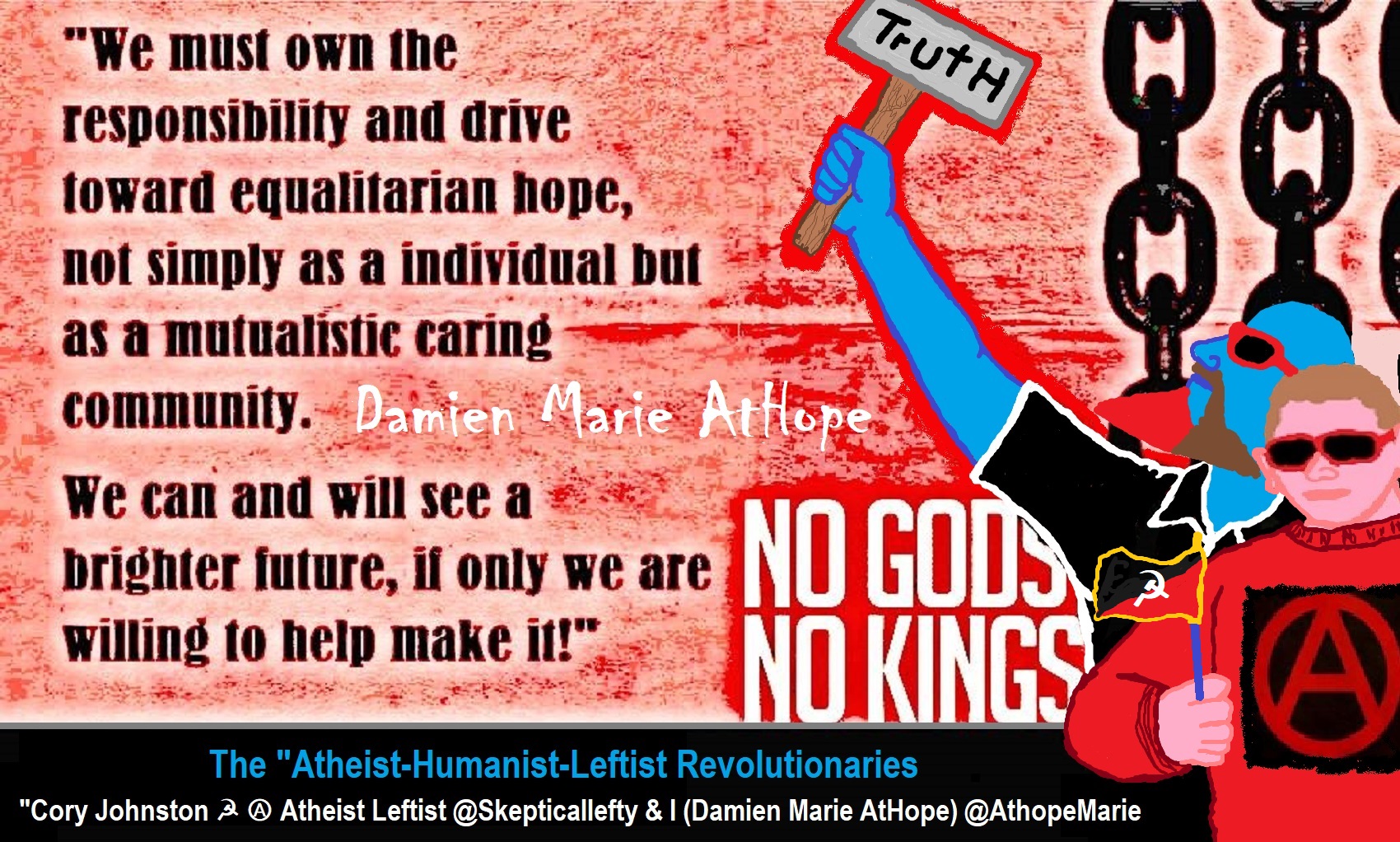
While hallucinogens are associated with shamanism, it is alcohol that is associated with paganism.
The Atheist-Humanist-Leftist Revolutionaries Shows in the prehistory series:
Show two: Pre-animism 300,000 years old and animism 100,000 years old: related to “Anarchism and Socialism”
Show tree: Totemism 50,000 years old: related to “Anarchism and Socialism”
Show four: Shamanism 30,000 years old: related to “Anarchism and Socialism”
Show five: Paganism 12,000 years old: related to “Anarchism and Socialism”
Show six: Emergence of hierarchy, sexism, slavery, and the new male god dominance: Paganism 7,000-5,000 years old: related to “Anarchism and Socialism” (Capitalism) (World War 0) Elite and their slaves!
Prehistory: related to “Anarchism and Socialism” the division of labor, power, rights, and recourses: VIDEO
Pre-animism 300,000 years old and animism 100,000 years old: related to “Anarchism and Socialism”: VIDEO
Totemism 50,000 years old: related to “Anarchism and Socialism”: VIDEO
Shamanism 30,000 years old: related to “Anarchism and Socialism”: VIDEO
Paganism 12,000 years old: related to “Anarchism and Socialism” (Pre-Capitalism): VIDEO
Paganism 7,000-5,000 years old: related to “Anarchism and Socialism” (Capitalism) (World War 0) Elite and their slaves: VIEDO
Paganism 5,000 years old: progressed organized religion and the state: related to “Anarchism and Socialism” (Kings and the Rise of the State): VIEDO
Paganism 4,000 years old: related to “Anarchism and Socialism” (First Moralistic gods, then the Origin time of Monotheism): VIEDO
I do not hate simply because I challenge and expose myths or lies any more than others being thought of as loving simply because of the protection and hiding from challenge their favored myths or lies.
The truth is best championed in the sunlight of challenge.
An archaeologist once said to me “Damien religion and culture are very different”
My response, So are you saying that was always that way, such as would you say Native Americans’ cultures are separate from their religions? And do you think it always was the way you believe?
I had said that religion was a cultural product. That is still how I see it and there are other archaeologists that think close to me as well. Gods too are the myths of cultures that did not understand science or the world around them, seeing magic/supernatural everywhere.
I personally think there is a goddess and not enough evidence to support a male god at Çatalhöyük but if there was both a male and female god and goddess then I know the kind of gods they were like Proto-Indo-European mythology.
This series idea was addressed in, Anarchist Teaching as Free Public Education or Free Education in the Public: VIDEO
Our 12 video series: Organized Oppression: Mesopotamian State Force and the Politics of power (9,000-4,000 years ago), is adapted from: The Complete and Concise History of the Sumerians and Early Bronze Age Mesopotamia (7000-2000 BC): https://www.youtube.com/watch?v=szFjxmY7jQA by “History with Cy“
Show #1: Mesopotamian State Force and the Politics of Power (Samarra, Halaf, Ubaid)
Show #2: Mesopotamian State Force and the Politics of Power
Show #3: Mesopotamian State Force and the Politics of Power (Uruk and the First Cities)
Show #4: Mesopotamian State Force and the Politics of Power (First Kings)
Show #5: Mesopotamian State Force and the Politics of Power (Early Dynastic Period)
Show #6: Mesopotamian State Force and the Politics of Power
Show #7: Mesopotamian State Force and the Politics of Power (Sargon and Akkadian Rule)
Show #9: Mesopotamian State Force and the Politics of Power (Gudea of Lagash and Utu-hegal)
Show #12: Mesopotamian State Force and the Politics of Power (Aftermath and Legacy of Sumer)
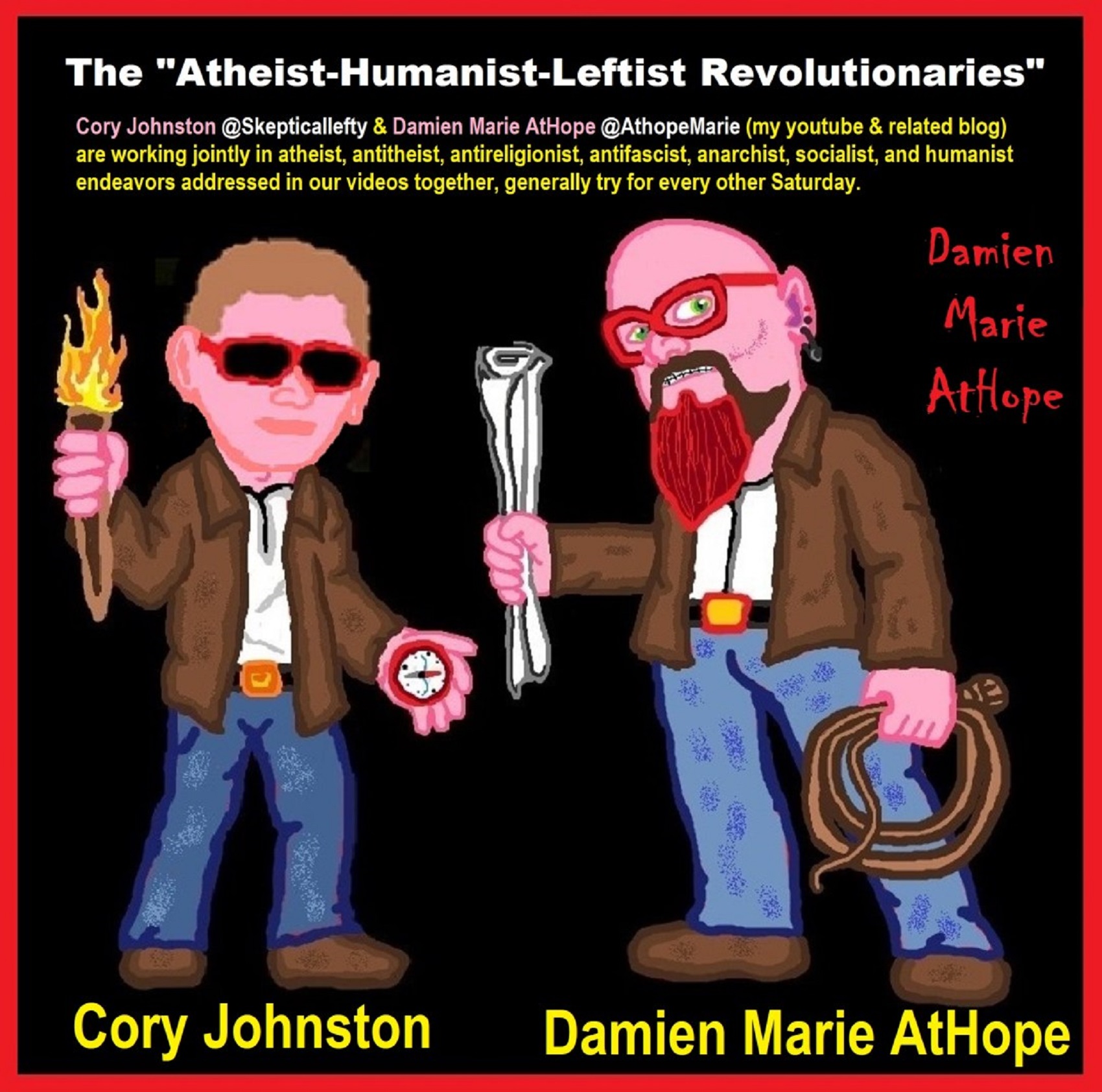
The “Atheist-Humanist-Leftist Revolutionaries”
Cory Johnston ☭ Ⓐ Atheist Leftist @Skepticallefty & I (Damien Marie AtHope) @AthopeMarie (my YouTube & related blog) are working jointly in atheist, antitheist, antireligionist, antifascist, anarchist, socialist, and humanist endeavors in our videos together, generally, every other Saturday.
Why Does Power Bring Responsibility?
Think, how often is it the powerless that start wars, oppress others, or commit genocide? So, I guess the question is to us all, to ask, how can power not carry responsibility in a humanity concept? I know I see the deep ethical responsibility that if there is power their must be a humanistic responsibility of ethical and empathic stewardship of that power. Will I be brave enough to be kind? Will I possess enough courage to be compassionate? Will my valor reach its height of empathy? I as everyone, earns our justified respect by our actions, that are good, ethical, just, protecting, and kind. Do I have enough self-respect to put my love for humanity’s flushing, over being brought down by some of its bad actors? May we all be the ones doing good actions in the world, to help human flourishing.
I create the world I want to live in, striving for flourishing. Which is not a place but a positive potential involvement and promotion; a life of humanist goal precision. To master oneself, also means mastering positive prosocial behaviors needed for human flourishing. I may have lost a god myth as an atheist, but I am happy to tell you, my friend, it is exactly because of that, leaving the mental terrorizer, god belief, that I truly regained my connected ethical as well as kind humanity.
Cory and I will talk about prehistory and theism, addressing the relevance to atheism, anarchism, and socialism.
At the same time as the rise of the male god, 7,000 years ago, there was also the very time there was the rise of violence, war, and clans to kingdoms, then empires, then states. It is all connected back to 7,000 years ago, and it moved across the world.
Cory Johnston: https://damienmarieathope.com/2021/04/cory-johnston-mind-of-a-skeptical-leftist/?v=32aec8db952d
The Mind of a Skeptical Leftist (YouTube)
Cory Johnston: Mind of a Skeptical Leftist @Skepticallefty
The Mind of a Skeptical Leftist By Cory Johnston: “Promoting critical thinking, social justice, and left-wing politics by covering current events and talking to a variety of people. Cory Johnston has been thoughtfully talking to people and attempting to promote critical thinking, social justice, and left-wing politics.” http://anchor.fm/skepticalleft
Cory needs our support. We rise by helping each other.
Cory Johnston ☭ Ⓐ @Skepticallefty Evidence-based atheist leftist (he/him) Producer, host, and co-host of 4 podcasts @skeptarchy @skpoliticspod and @AthopeMarie
Damien Marie AtHope (“At Hope”) Axiological Atheist, Anti-theist, Anti-religionist, Secular Humanist. Rationalist, Writer, Artist, Poet, Philosopher, Advocate, Activist, Psychology, and Armchair Archaeology/Anthropology/Historian.
Damien is interested in: Freedom, Liberty, Justice, Equality, Ethics, Humanism, Science, Atheism, Antiteism, Antireligionism, Ignosticism, Left-Libertarianism, Anarchism, Socialism, Mutualism, Axiology, Metaphysics, LGBTQI, Philosophy, Advocacy, Activism, Mental Health, Psychology, Archaeology, Social Work, Sexual Rights, Marriage Rights, Woman’s Rights, Gender Rights, Child Rights, Secular Rights, Race Equality, Ageism/Disability Equality, Etc. And a far-leftist, “Anarcho-Humanist.”
I am not a good fit in the atheist movement that is mostly pro-capitalist, I am anti-capitalist. Mostly pro-skeptic, I am a rationalist not valuing skepticism. Mostly pro-agnostic, I am anti-agnostic. Mostly limited to anti-Abrahamic religions, I am an anti-religionist.
To me, the “male god” seems to have either emerged or become prominent around 7,000 years ago, whereas the now favored monotheism “male god” is more like 4,000 years ago or so. To me, the “female goddess” seems to have either emerged or become prominent around 11,000-10,000 years ago or so, losing the majority of its once prominence around 2,000 years ago due largely to the now favored monotheism “male god” that grow in prominence after 4,000 years ago or so.
My Thought on the Evolution of Gods?
Animal protector deities from old totems/spirit animal beliefs come first to me, 13,000/12,000 years ago, then women as deities 11,000/10,000 years ago, then male gods around 7,000/8,000 years ago. Moralistic gods around 5,000/4,000 years ago, and monotheistic gods around 4,000/3,000 years ago.

Damien Marie AtHope (Said as “At” “Hope”)/(Autodidact Polymath but not good at math):
Axiological Atheist, Anti-theist, Anti-religionist, Secular Humanist, Rationalist, Writer, Artist, Jeweler, Poet, “autodidact” Philosopher, schooled in Psychology, and “autodidact” Armchair Archaeology/Anthropology/Pre-Historian (Knowledgeable in the range of: 1 million to 5,000/4,000 years ago). I am an anarchist socialist politically. Reasons for or Types of Atheism
My Website, My Blog, & Short-writing or Quotes, My YouTube, Twitter: @AthopeMarie, and My Email: damien.marie.athope@gmail.com

